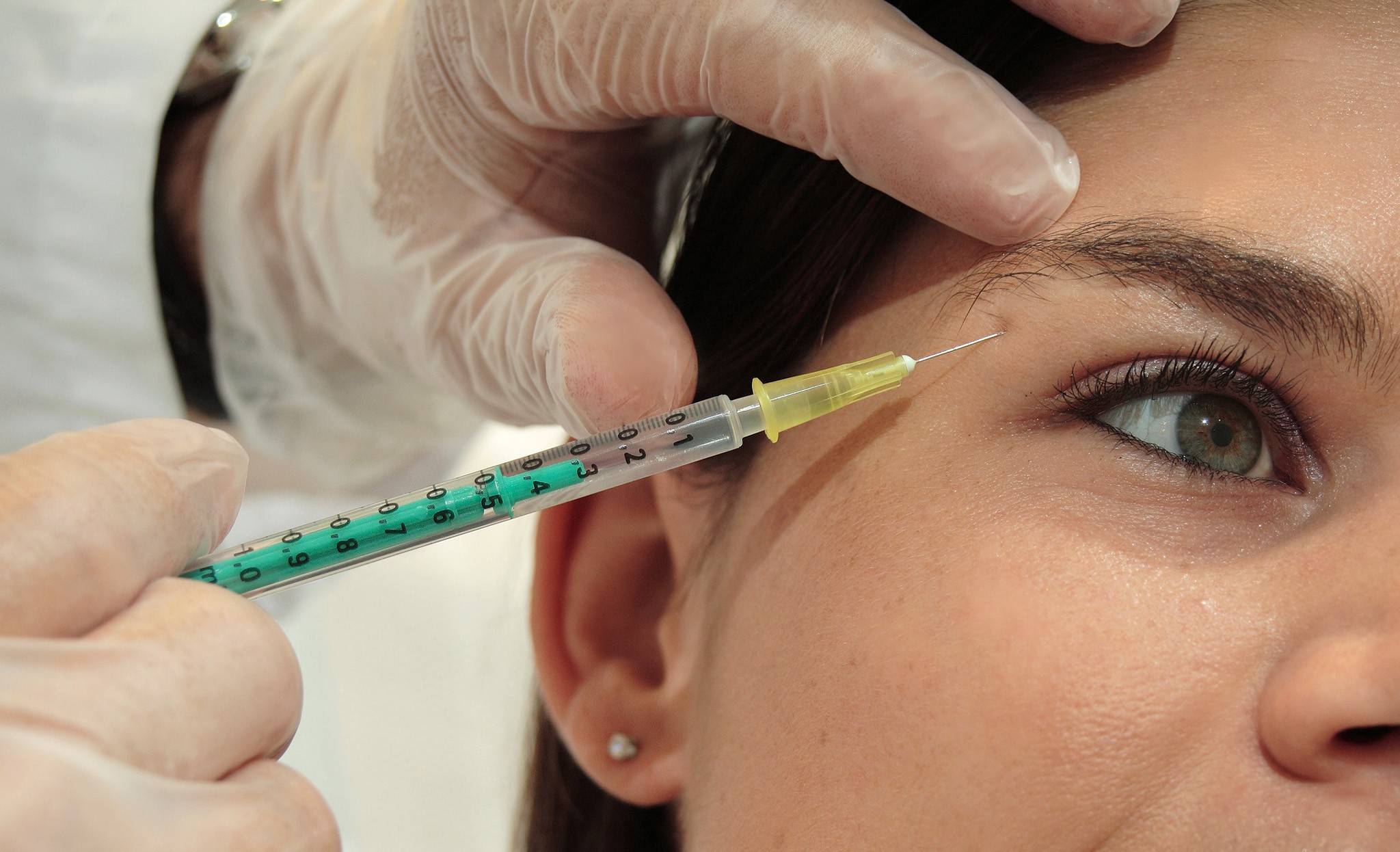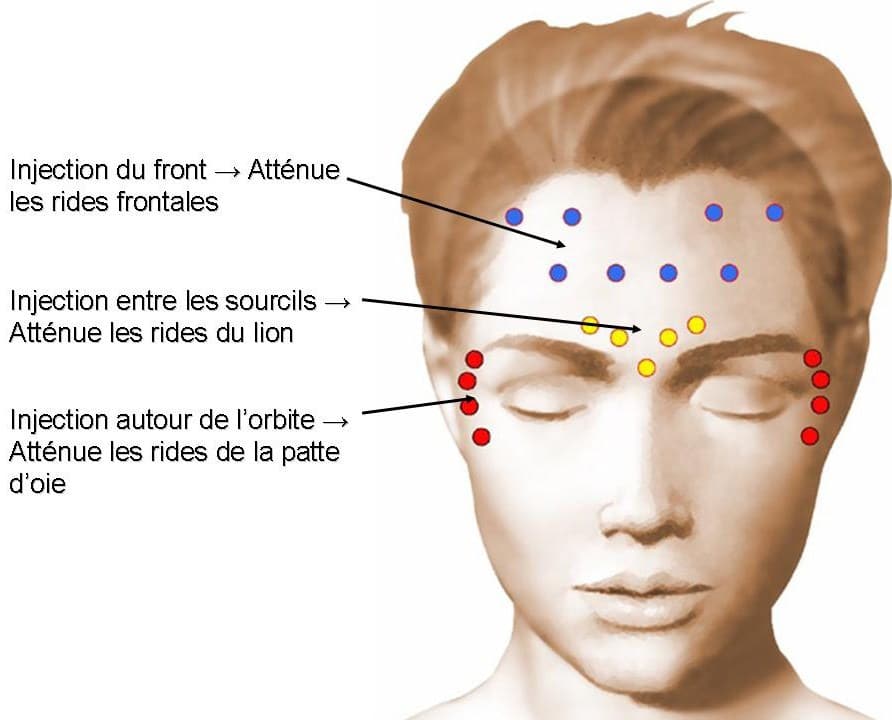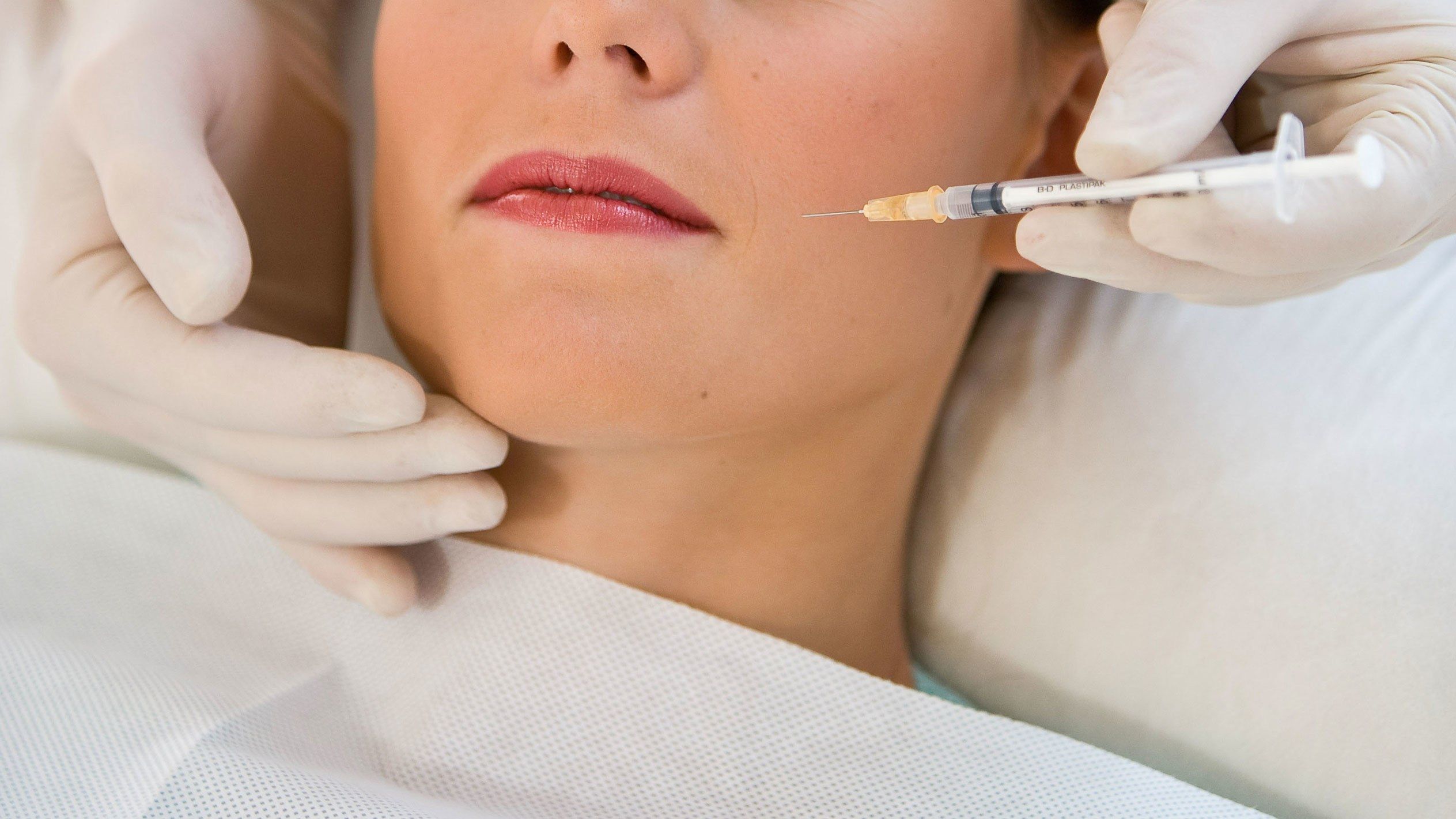Injection de botox. Botox Injections: A Comprehensive Guide to Botulinum Toxin Treatment
What is Botox and how does it work. How are Botox injections administered. What conditions can Botox treat. Are there any side effects of Botox injections. How long do the effects of Botox last. Who should avoid Botox treatments. What are the alternatives to Botox injections.
The Science Behind Botox: Understanding Botulinum Toxin
Botox, short for Botulinum toxin, is a neurotoxic protein produced by the bacterium Clostridium botulinum. While it’s notorious for causing botulism, a severe form of food poisoning, medical professionals have harnessed its power for various therapeutic and cosmetic applications. But how does this toxin work to benefit patients?
The mechanism of action for Botox is fascinatingly simple yet effective. When injected into specific muscles, it blocks nerve signals that cause muscle contractions. This temporary paralysis or weakening of targeted muscles forms the basis of its therapeutic effects. The beauty of Botox lies in its precision – when administered by skilled professionals, it affects only the intended areas without impacting surrounding tissues.
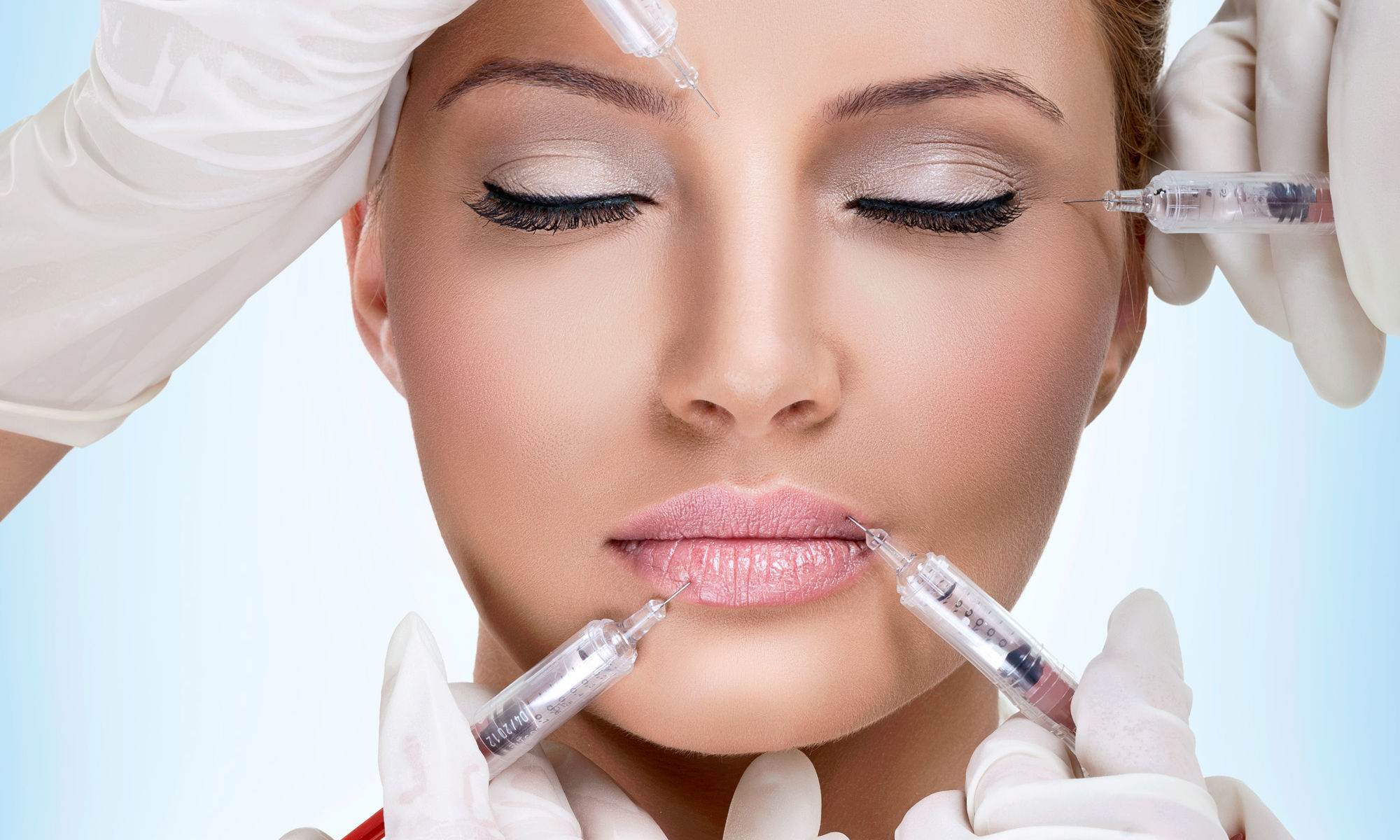
Types of Botulinum Toxin
While “Botox” has become a household name, it’s important to note that it’s actually a brand name for one type of botulinum toxin. There are several types of this toxin, labeled from A to G. However, only types A and B are used commercially for medical and cosmetic purposes. The most commonly used formulations include:
- OnabotulinumtoxinA (Botox)
- AbobotulinumtoxinA (Dysport)
- IncobotulinumtoxinA (Xeomin)
- RimabotulinumtoxinB (Myobloc)
Each of these formulations has slightly different properties, dosing, and spread characteristics, allowing physicians to choose the most appropriate option for each patient and condition.
The Versatility of Botox: Medical and Cosmetic Applications
Botox’s ability to temporarily paralyze muscles has led to its use in treating a wide array of medical conditions. Its applications extend far beyond the realm of cosmetic enhancements, offering relief to patients suffering from various neuromuscular disorders. What are some of the key medical conditions that Botox can address?
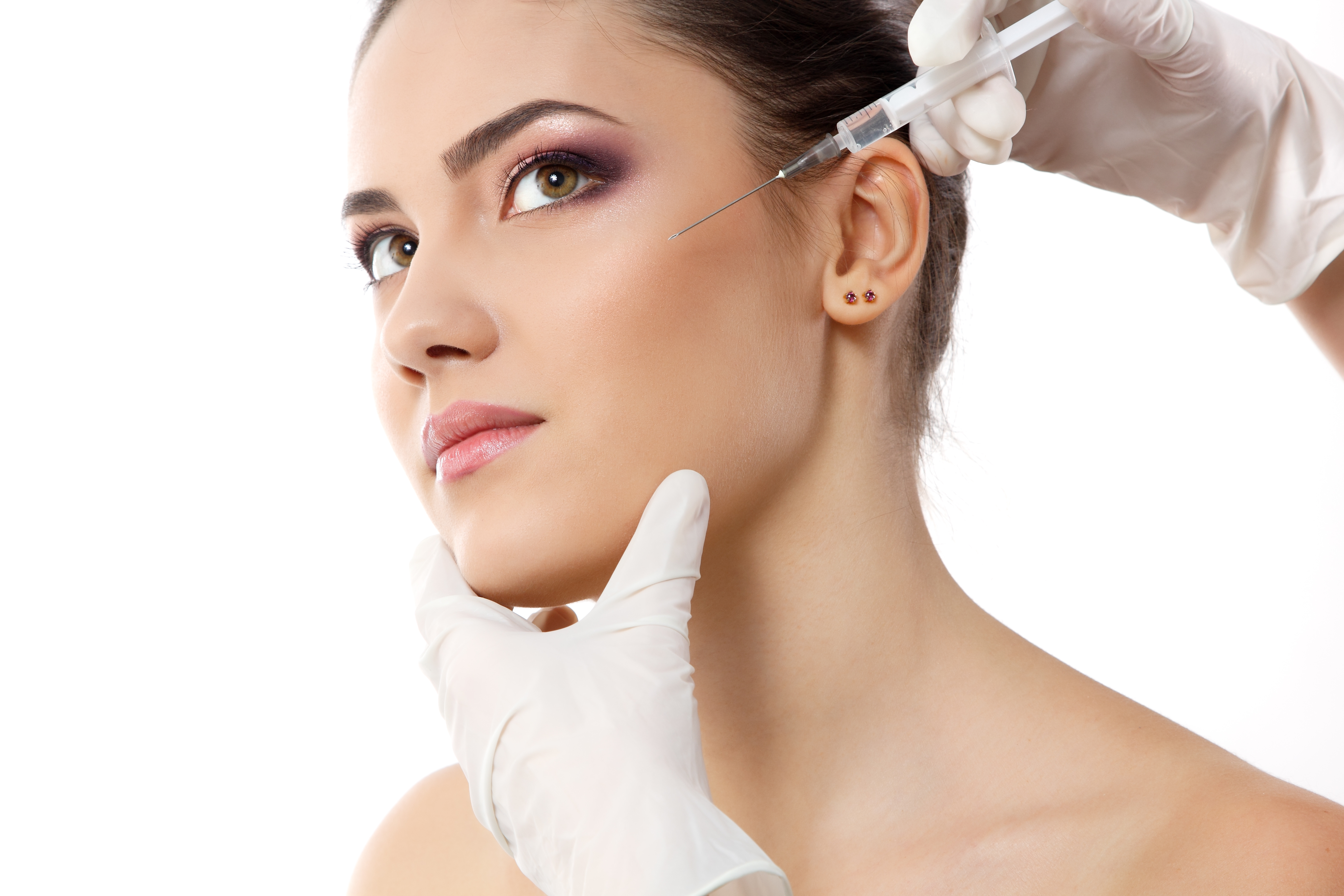
Medical Uses of Botox
- Cervical Dystonia: This neurological disorder causes severe neck and shoulder muscle contractions. Botox injections can significantly reduce pain and abnormal head positioning.
- Blepharospasm: Uncontrollable blinking and spasms of the eyelids can be effectively managed with Botox.
- Strabismus: Misaligned eyes, or “crossed eyes,” can be corrected by strategically injecting Botox into specific eye muscles.
- Chronic Migraine: For patients suffering from frequent, debilitating migraines, Botox injections can reduce the frequency and severity of episodes.
- Overactive Bladder: Botox can help control urinary incontinence by relaxing the bladder muscles.
- Hyperhidrosis: Severe underarm sweating can be dramatically reduced with Botox injections into the sweat glands.
Cosmetic Applications
In the realm of aesthetics, Botox has revolutionized non-invasive facial rejuvenation. Its primary cosmetic use is the temporary smoothing of facial wrinkles, particularly in the upper face. Common treatment areas include:
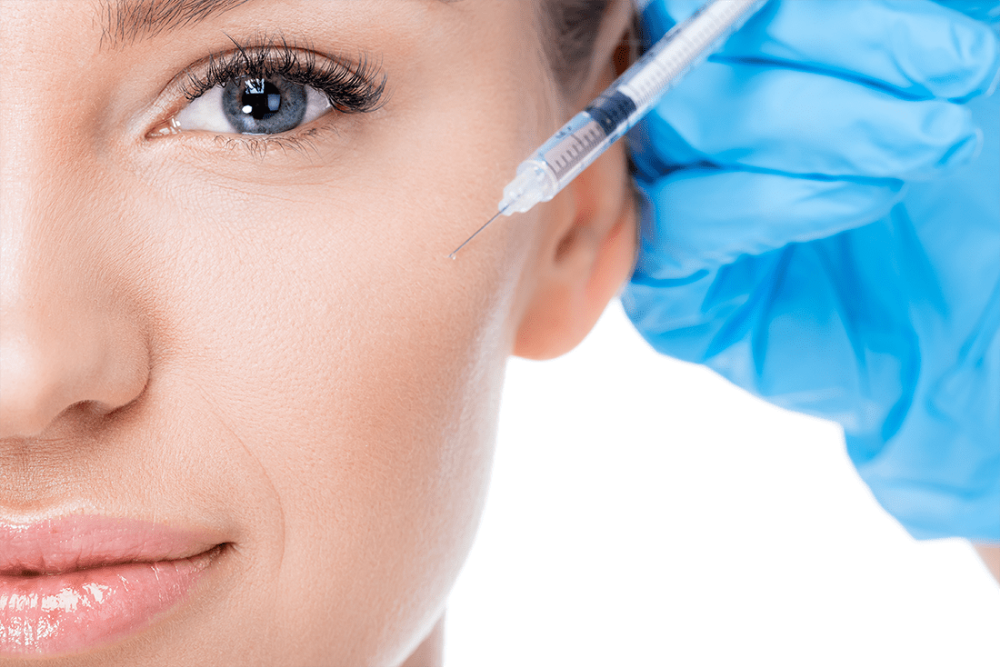
- Forehead lines
- Frown lines between the eyebrows (glabellar lines)
- Crow’s feet around the eyes
- Bunny lines on the nose
- Lip lines
By relaxing the muscles responsible for these dynamic wrinkles, Botox can create a more youthful, refreshed appearance without the need for surgery.
The Botox Procedure: What to Expect During Treatment
Understanding the Botox injection process can help alleviate anxiety and ensure patients are well-prepared for their treatment. So, what happens during a typical Botox session?
Pre-Treatment Consultation
Before any injections are administered, patients undergo a thorough consultation with a qualified healthcare provider. This typically involves:
- Discussing medical history and any current medications
- Examining the treatment area
- Discussing goals and expectations
- Explaining potential risks and side effects
- Taking pre-treatment photographs for comparison
The Injection Process
The actual Botox injection procedure is relatively quick and straightforward:

- The treatment area is cleaned with an antiseptic solution.
- A very fine needle is used to inject small amounts of Botox into specific muscles.
- The number of injections depends on the size of the treatment area and the condition being addressed.
- The entire process typically takes about 10-15 minutes.
- No anesthesia is required, though some practitioners may use a topical numbing cream for sensitive areas.
Is the procedure painful? Most patients report only minimal discomfort, often describing the sensation as a slight pinch. Ice packs or vibration devices may be used to further minimize any pain during injection.
Post-Treatment Care and Results: Maximizing the Benefits of Botox
After receiving Botox injections, proper aftercare is crucial to ensure optimal results and minimize potential side effects. What should patients do (and avoid) following their treatment?
Immediate Aftercare
- Avoid touching or rubbing the treated area for at least 4 hours
- Stay upright for 4 hours; do not lie down
- Avoid strenuous exercise for 24 hours
- Do not consume alcohol for 24 hours
- Avoid applying makeup to the treated area for at least 4 hours
When to Expect Results
The effects of Botox are not immediate. Typically, patients begin to notice changes within 3-5 days, with full results visible after about 2 weeks. How long do these results last? The duration varies depending on the treatment area and individual factors, but generally:
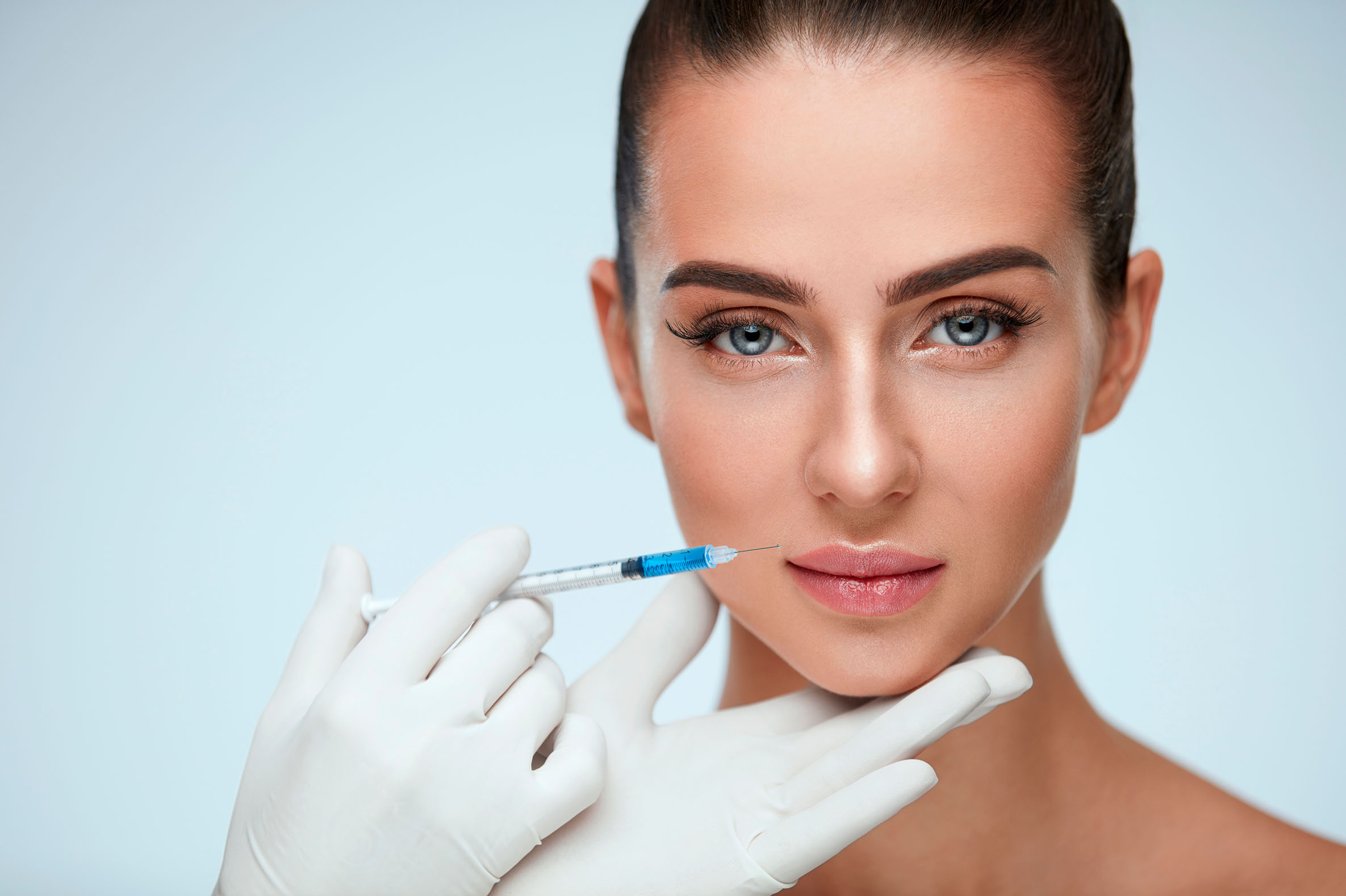
- Cosmetic results last 3-4 months
- Medical treatments may last 3-12 months
To maintain results, regular follow-up treatments are necessary. Many patients find that with consistent treatments, they may need less product over time as muscles become “trained” to relax.
Potential Side Effects and Risks: What Patients Should Know
While Botox is generally considered safe when administered by qualified professionals, it’s important for patients to be aware of potential side effects and risks. What are the most common adverse effects associated with Botox injections?
Common Side Effects
- Pain, swelling, or bruising at the injection site
- Headache or flu-like symptoms
- Temporary eyelid drooping (ptosis) when treating upper face wrinkles
- Dry eyes or excessive tearing
- Mild nausea
These effects are typically mild and resolve on their own within a few days to weeks.
Rare but Serious Risks
In rare cases, more serious complications can occur, especially if the toxin spreads beyond the treatment area:

- Difficulty swallowing or breathing
- Muscle weakness
- Vision problems
- Loss of bladder control
It’s crucial for patients to seek immediate medical attention if they experience any of these symptoms after Botox treatment.
Who Should Avoid Botox: Contraindications and Precautions
While Botox can be beneficial for many individuals, it’s not suitable for everyone. Who should exercise caution or avoid Botox treatments altogether?
Absolute Contraindications
- Pregnant or breastfeeding women
- Individuals with a known allergy to botulinum toxin or any ingredients in the formulation
- Those with active infection at the proposed injection site
- Patients with certain neuromuscular disorders (e.g., myasthenia gravis, Lambert-Eaton syndrome)
Relative Contraindications
Some conditions may not completely rule out Botox treatment but require careful consideration and discussion with a healthcare provider:
- Bleeding disorders or use of blood thinners
- Weak facial muscles
- Deep facial scars
- Very thick facial skin
- Unrealistic expectations about the treatment outcome
It’s crucial for patients to provide a complete medical history to their provider to ensure safe and effective treatment.
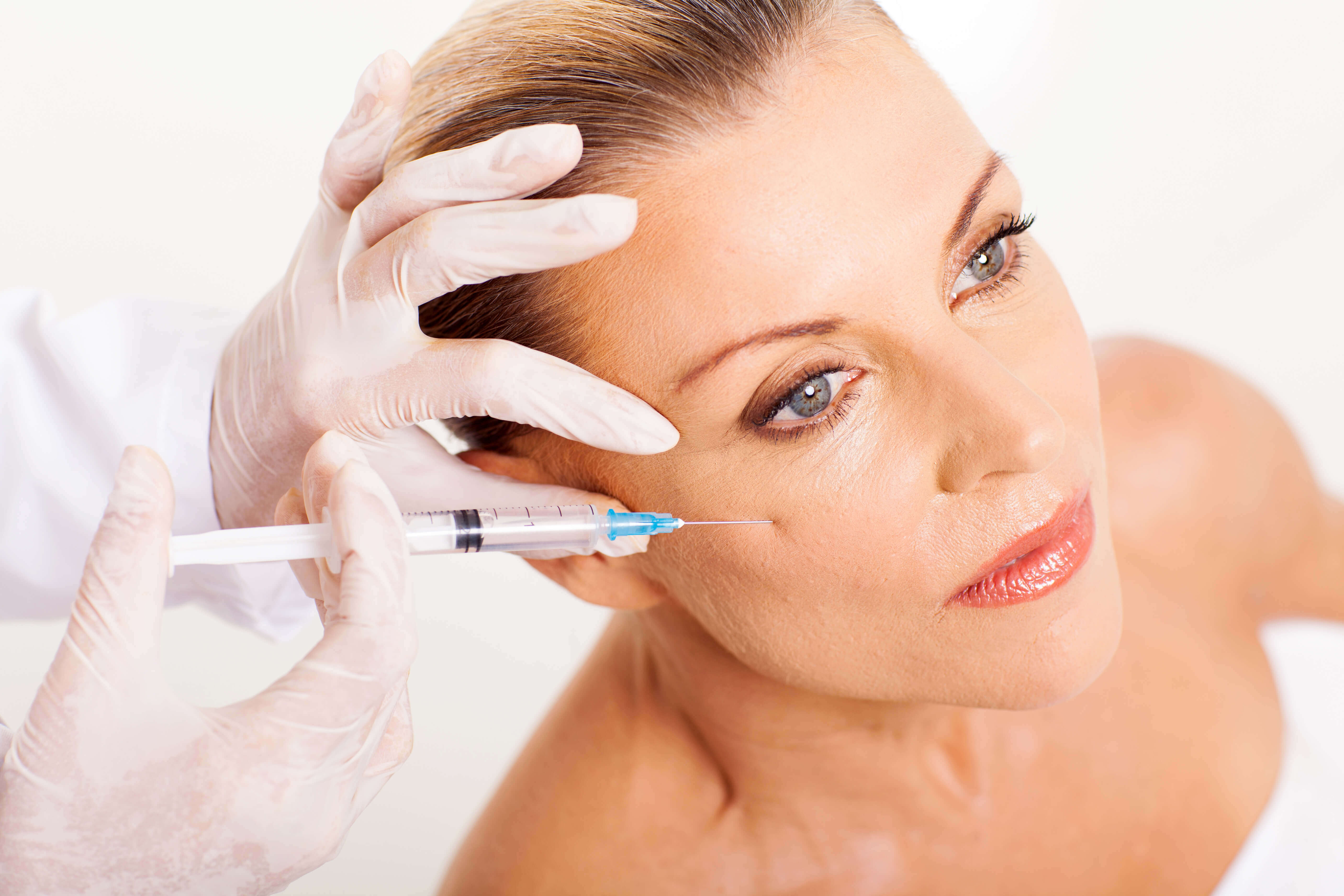
Alternatives to Botox: Exploring Other Treatment Options
While Botox is a popular and effective treatment for many conditions, it’s not the only option available. What alternatives exist for those who cannot or choose not to use Botox?
Non-Invasive Alternatives
- Topical creams and serums (e.g., retinoids, peptides)
- Chemical peels
- Microdermabrasion
- Ultrasound therapy
- Radiofrequency treatments
- LED light therapy
Minimally Invasive Alternatives
- Dermal fillers (e.g., hyaluronic acid fillers)
- Microneedling
- Thread lifts
Surgical Options
For more dramatic or long-lasting results, surgical procedures may be considered:
- Facelift
- Brow lift
- Eyelid surgery (blepharoplasty)
The choice of alternative depends on the specific condition being treated, the desired outcome, and individual patient factors. A consultation with a qualified healthcare provider can help determine the most appropriate treatment option.
The Future of Botox: Emerging Research and Potential Applications
As our understanding of botulinum toxin grows, so too does its potential for treating various medical conditions. What new applications are researchers exploring for Botox?

Expanding Medical Applications
Ongoing research is investigating the use of Botox for:
- Depression: Early studies suggest Botox injections in the forehead may alleviate symptoms of depression.
- Atrial fibrillation: Injections into heart tissue may help manage this common heart rhythm disorder.
- Gastroparesis: Botox may help relax the pyloric sphincter, improving gastric emptying in this digestive disorder.
- Osteoarthritis: Intra-articular Botox injections are being studied for pain relief in knee osteoarthritis.
- Premature ejaculation: Botox injections into the bulbospongiosus muscle may help delay ejaculation.
Advancements in Formulation and Delivery
Scientists are also working on improving Botox itself:
- Longer-lasting formulations to extend the duration of effects
- Topical Botox creams for needle-free application
- More targeted delivery methods to reduce side effects
These advancements could potentially make Botox treatments more accessible, comfortable, and effective for a wider range of patients.

As research continues, it’s likely that we’ll see even more innovative uses for this versatile toxin in the coming years. However, it’s important to note that new applications will require rigorous testing and regulatory approval before becoming widely available.
Botox | Botulinum Toxin | Botox Injections
Also called: Botulinum toxin type A
Botox is a drug made from a toxin produced by the bacterium Clostridium botulinum. It’s the same toxin that causes a life-threatening type of food poisoning called botulism. Doctors use it in small doses to treat health problems, including:
- Temporary smoothing of facial wrinkles and improving your appearance
- Severe underarm sweating
- Cervical dystonia – a neurological disorder that causes severe neck and shoulder muscle contractions
- Blepharospasm – uncontrollable blinking
- Strabismus – misaligned eyes
- Chronic migraine
- Overactive bladder
Botox injections work by weakening or paralyzing certain muscles or by blocking certain nerves. The effects last about three to twelve months, depending on what you are treating. The most common side effects are pain, swelling, or bruising at the injection site. You could also have flu-like symptoms, headache, and upset stomach. Injections in the face may also cause temporary drooping eyelids. You should not use Botox if you are pregnant or breastfeeding.
You could also have flu-like symptoms, headache, and upset stomach. Injections in the face may also cause temporary drooping eyelids. You should not use Botox if you are pregnant or breastfeeding.
Botox Injections
(Mayo Foundation for Medical Education and Research)
Botulinum Neurotoxin Injections
(Dystonia Medical Research Foundation)
Botulinum Toxin (Botox)
(VisualDX)
Botulinum Toxin (Botox) for Facial Wrinkles
(American Academy of Ophthalmology)
Botulinum Toxin Injections: A Treatment for Muscle Spasms
(American Academy of Family Physicians)
Also in Spanish
Botulinum Toxin Therapy: Overview
(American Academy of Dermatology)
Counterfeit Version of Botox Found in the United States
(Food and Drug Administration)
Injectables and Wrinkle Treatment: Understanding Types of Treatments for Facial Wrinkles
(American Academy of Facial Plastic and Reconstructive Surgery)
Neuromodulators for Aging Skin
(American Society for Dermatologic Surgery)
Benefits of Botulinum Toxin: It’s Not Just for Wrinkles
(National Institutes of Health)
ClinicalTrials.
 gov: Botulinum Toxins
gov: Botulinum Toxins(National Institutes of Health)
Article: Efficacy of botulinum toxin A injection in pelvic floor muscles in.
 ..
..Article: Factors Affecting the Efficacy of Botulinum Toxin Injection in the Treatment…
Article: Improving the Efficacy of Botulinum Toxin for Cervical Dystonia: A Scoping.
 ..
..Botox — see more articles
Find a Dermatologist
(American Academy of Dermatology)
Botulinum Toxin Injection for Facial Wrinkles
REBECCA SMALL, MD
Botulinum toxin injection for treatment of facial wrinkles is the most frequently performed cosmetic procedure in the United States, and it is one of the most common entry procedures for clinicians seeking to incorporate aesthetic treatments into their practice.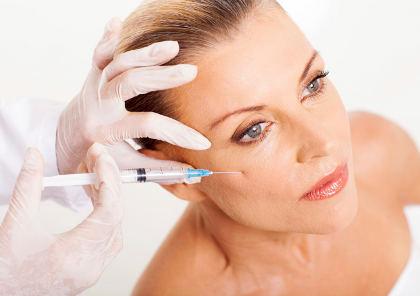 Treatment of frown lines and crow’s feet, which are the cosmetic indications approved by the U.S. Food and Drug Administration, and horizontal forehead lines, offers predictable results, has few adverse effects, and is associated with high patient satisfaction. Wrinkles are formed by dermal atrophy and repetitive contraction of underlying facial musculature. Botulinum toxin is a potent neurotoxin that inhibits release of acetylcholine at the neuromuscular junction. Injection of small quantities of botulinum toxin into specific overactive muscles causes localized muscle relaxation that smooths the overlying skin and reduces wrinkles. Botulinum toxin effects take about two weeks to fully develop and last three to four months. Dynamic wrinkles, seen during muscle contraction, yield more dramatic results than static wrinkles, which are visible at rest. Botulinum toxin injection is contraindicated in persons with keloidal scarring, neuromuscular disorders (e.g., myasthenia gravis), allergies to constituents of botulinum toxin products, and body dysmorphic disorder.
Treatment of frown lines and crow’s feet, which are the cosmetic indications approved by the U.S. Food and Drug Administration, and horizontal forehead lines, offers predictable results, has few adverse effects, and is associated with high patient satisfaction. Wrinkles are formed by dermal atrophy and repetitive contraction of underlying facial musculature. Botulinum toxin is a potent neurotoxin that inhibits release of acetylcholine at the neuromuscular junction. Injection of small quantities of botulinum toxin into specific overactive muscles causes localized muscle relaxation that smooths the overlying skin and reduces wrinkles. Botulinum toxin effects take about two weeks to fully develop and last three to four months. Dynamic wrinkles, seen during muscle contraction, yield more dramatic results than static wrinkles, which are visible at rest. Botulinum toxin injection is contraindicated in persons with keloidal scarring, neuromuscular disorders (e.g., myasthenia gravis), allergies to constituents of botulinum toxin products, and body dysmorphic disorder.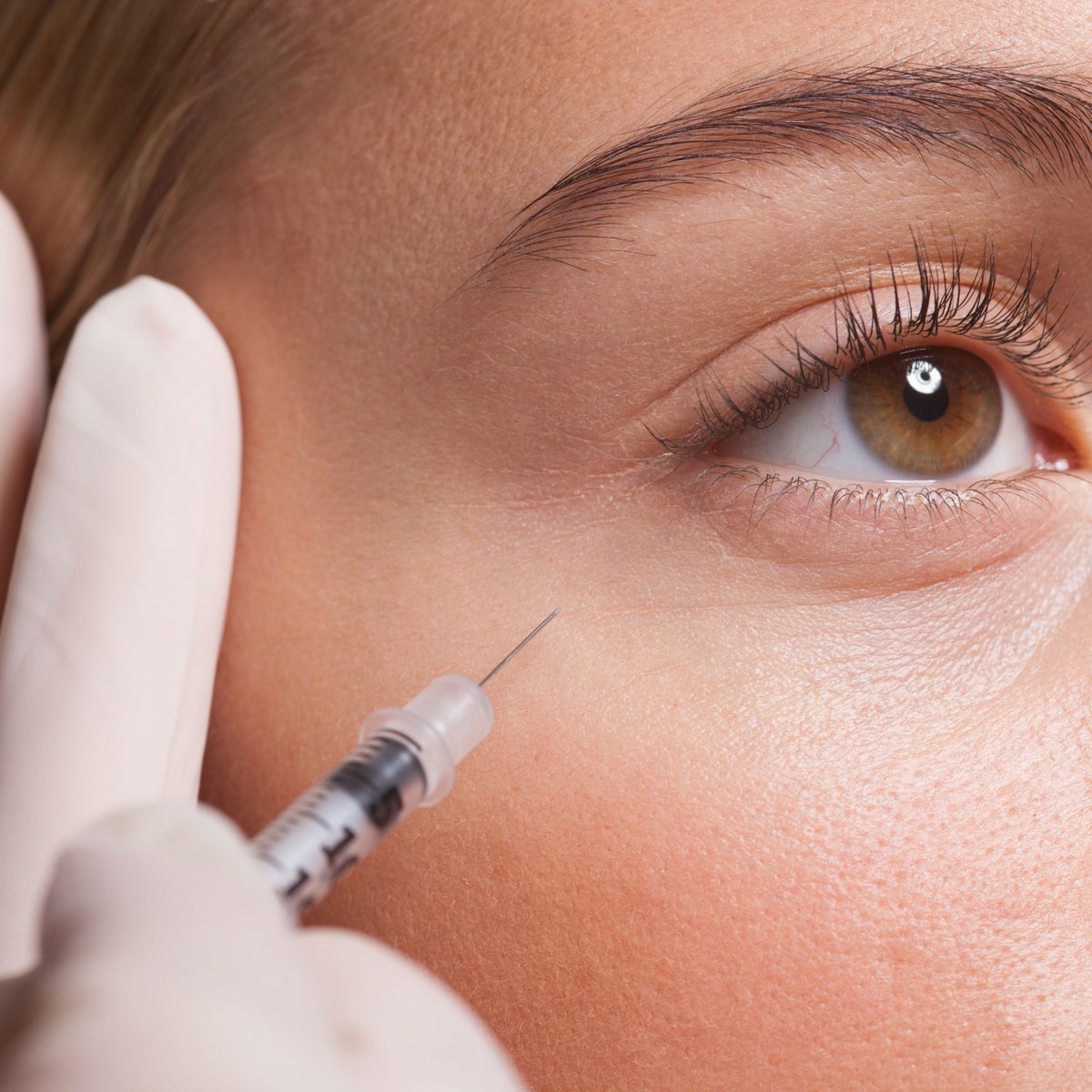 Minor bruising can occur with botulinum toxin injection. Temporary blepharoptosis and eyebrow ptosis are rare complications that are technique-dependent; incidence declines as injector skill improves.
Minor bruising can occur with botulinum toxin injection. Temporary blepharoptosis and eyebrow ptosis are rare complications that are technique-dependent; incidence declines as injector skill improves.
Botulinum toxin injection for treatment of facial wrinkles is the most frequently performed cosmetic procedure in the United States,1 and it is one of the most common entry procedures for clinicians seeking to incorporate aesthetic treatments into their practice.2 Botulinum toxin injection, particularly in the upper one-third of the face, offers predictable results,3 has few adverse effects,4 and is associated with high patient satisfaction.5 This article reviews relevant facial anatomy, patient selection, complications, and injection technique for cosmetic botulinum toxin treatment with a focus on frown lines. It is, however, not intended as a replacement for a formal instructional course.
| Clinical recommendation | Evidence rating | References |
|---|---|---|
| Botulinum toxin serotype A is safe and effective for reduction of frown lines. | A | 9, 12, 13, 20, 21 |
| Botulinum toxin serotype A is safe and effective for reduction of crow’s feet. | A | 12, 21, 24, 25 |
| In preparation for botulinum toxin treatment, patients should be advised to discontinue aspirin and any medication or dietary supplements associated with bruising for two weeks before treatment. | C | 17, 23 |
Mechanism of Action
Wrinkles are formed by dermal atrophy and repetitive contraction of underlying facial musculature. Injection of small quantities of botulinum toxin into specific overactive muscles causes localized muscle relaxation that smooths the overlying skin and reduces wrinkles.6
Injection of small quantities of botulinum toxin into specific overactive muscles causes localized muscle relaxation that smooths the overlying skin and reduces wrinkles.6
Botulinum toxin is a potent neurotoxin protein derived from the Clostridium botulinum bacterium. It exerts its effect at the neuromuscular junction by inhibiting the release of acetylcholine, which causes temporary chemical denervation. At the cellular level, botulinum toxin functions by cleaving a docking protein (synaptosomal-associated protein of 25 kDA [SNAP-25]) on the internal surface of neuronal membranes, thereby inhibiting vesicle fusion and release of acetylcholine.7 Botulinum toxin effects in the targeted muscles diminish over time as SNAP-25 regenerates, and neuromuscular signaling and muscle contractility are restored.
Indications
Botulinum toxin has been used for more than 20 years to treat a variety of conditions including blepharospasm, strabismus, cervical dystonia, migraines, hyperhidrosis, and muscle spasticity. Botulinum toxin was first approved by the U.S. Food and Drug Administration (FDA) for cosmetic use in 2002 as Botox to treat glabellar complex muscles that form frown lines and in 2013 to treat lateral orbicularis oculi muscles that form crow’s feet 8; it is used off-label for all other cosmetic facial indications. It has become the treatment of choice for wrinkles occurring in the upper one-third of the face (i.e., frown lines, horizontal forehead lines, and crow’s feet). It is also used in the lower two-thirds of the face, but this is more technically challenging and is an advanced application.9–14
Botulinum toxin was first approved by the U.S. Food and Drug Administration (FDA) for cosmetic use in 2002 as Botox to treat glabellar complex muscles that form frown lines and in 2013 to treat lateral orbicularis oculi muscles that form crow’s feet 8; it is used off-label for all other cosmetic facial indications. It has become the treatment of choice for wrinkles occurring in the upper one-third of the face (i.e., frown lines, horizontal forehead lines, and crow’s feet). It is also used in the lower two-thirds of the face, but this is more technically challenging and is an advanced application.9–14
Anatomy
The muscles of facial expression are unique in that they have soft tissue attachments to skin through the superficial muscular aponeurotic system, unlike most muscles, which have bony attachments (Figure 115). When facial muscles contract, the overlying skin also moves, forming dynamic wrinkles perpendicular to the direction of muscle contraction (Figure 215).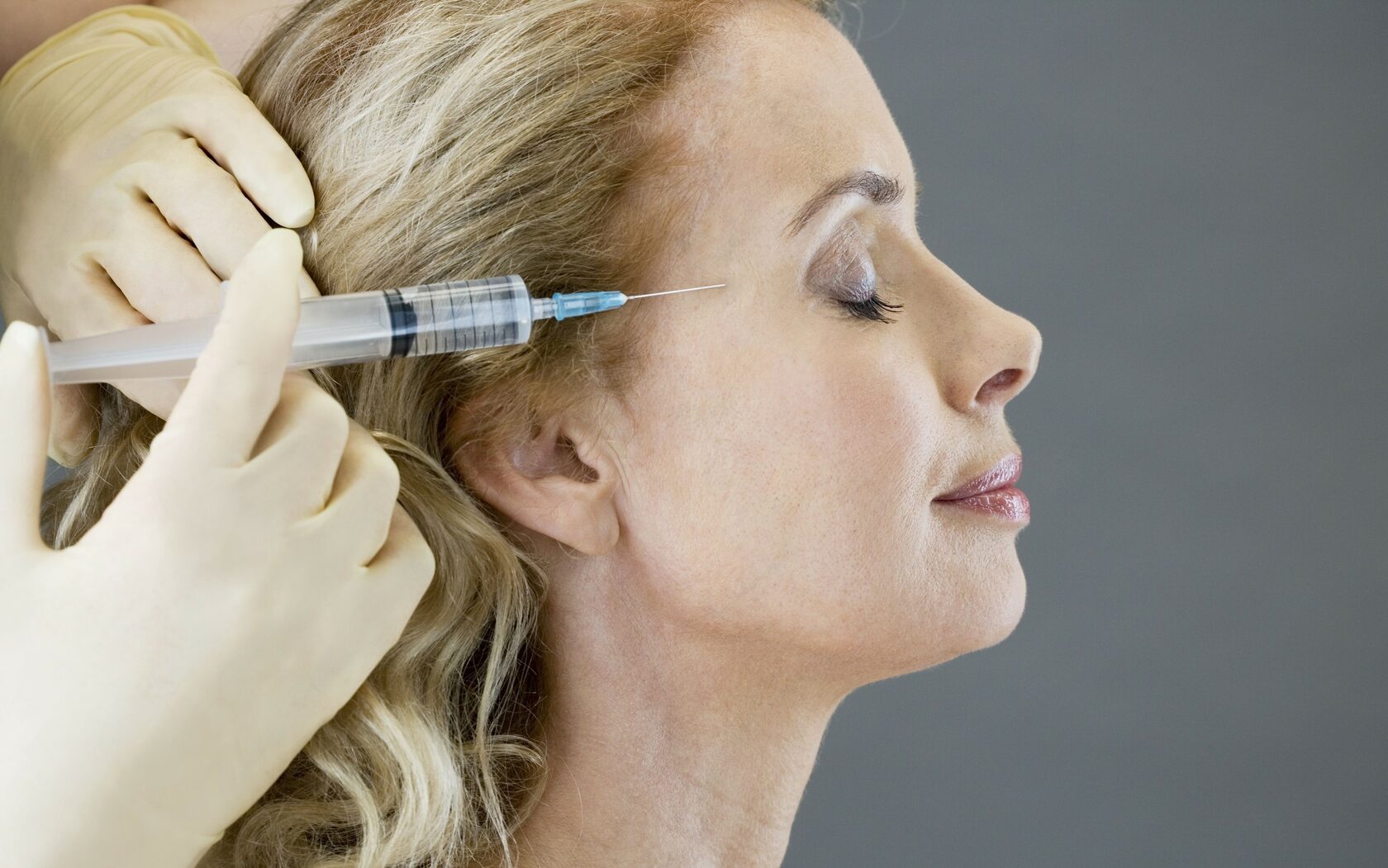
Glabellar wrinkles, or frown lines, are vertical lines occurring between the medial aspects of the eyebrows. The muscles contributing to formation of frown lines are the glabellar complex depressor muscles, which include the corrugator supercilii, procerus, and depressor supercilii. Contraction of these muscles pulls the brows medially and inferiorly (Figure 315).
Patient Selection
Patients with dynamic wrinkles demonstrate the most dramatic improvements from botulinum toxin injection and are ideal candidates for treatment (Figure 415). Patients with static wrinkles that are visible at rest are also candidates (Figure 515), but results are slower and patients may require two or three consecutive botulinum toxin treatments for significant improvements.15 Deep static lines may not fully respond to botulinum toxin injection alone and may require combination treatment with dermal fillers or other cosmetic procedures to achieve optimal results. Setting realistic expectations at the time of consultation is important for patient satisfaction and success with botulinum toxin treatments. Contraindications to botulinum toxin injection include keloidal scarring, neuromuscular disorders (e.g., myasthenia gravis), allergy to constituents of botulinum toxin product, unrealistic expectations, and body dysmorphic disorder (Table 1).14,16–18
Setting realistic expectations at the time of consultation is important for patient satisfaction and success with botulinum toxin treatments. Contraindications to botulinum toxin injection include keloidal scarring, neuromuscular disorders (e.g., myasthenia gravis), allergy to constituents of botulinum toxin product, unrealistic expectations, and body dysmorphic disorder (Table 1).14,16–18
| Body dysmorphic disorder |
| Dependency on facial expression for livelihood (e.g., actors, singers) |
| Dermatoses in the treatment area (e.g., psoriasis, eczema) |
| Gross motor weakness in the treatment area (e.g., Bell palsy) |
| Immunocompromised |
| Infection in the treatment area |
| Keloidal scarring |
Neuromuscular disorder (e.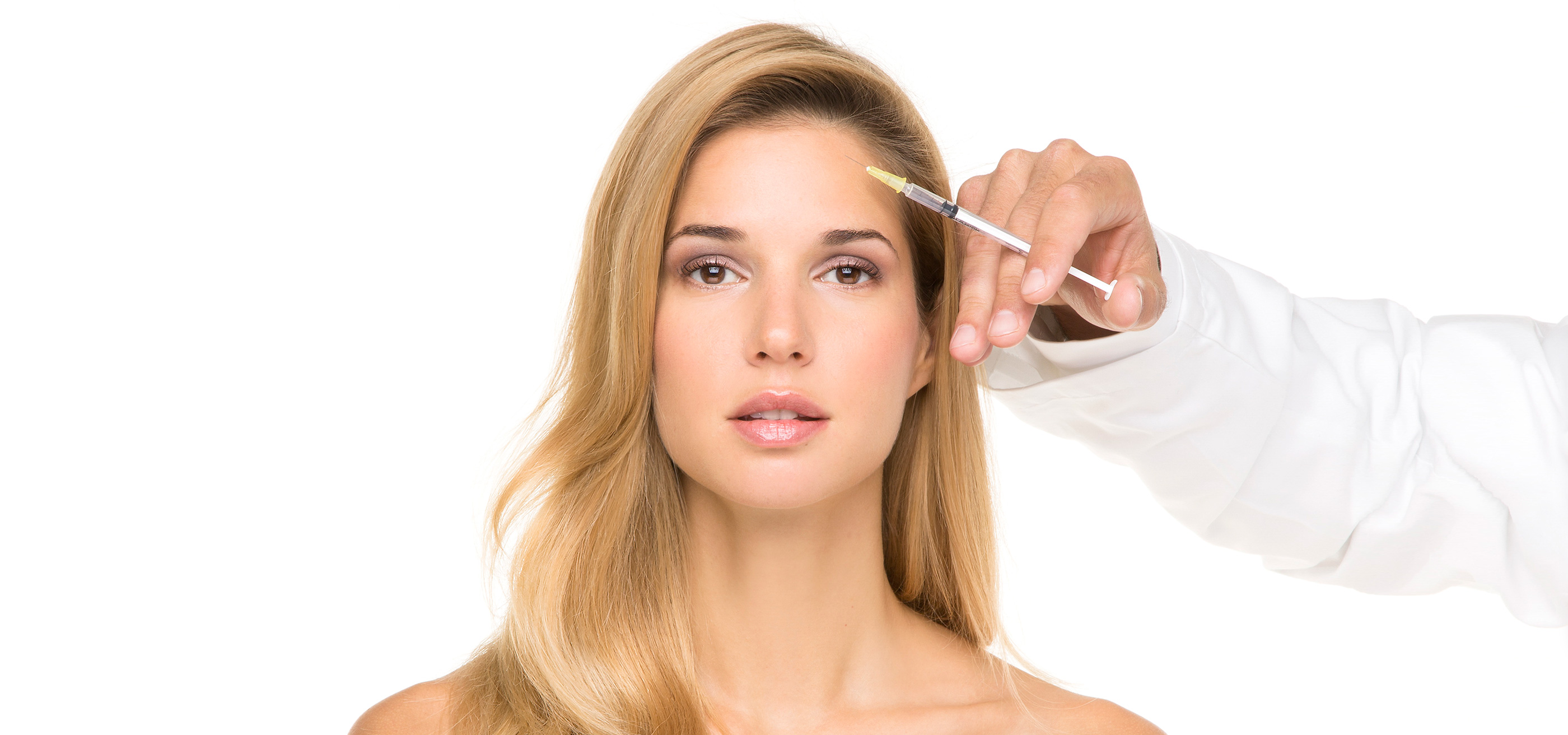 g., amyotrophic lateral sclerosis, myasthenia gravis, Lambert-Eaton syndrome, myopathies) g., amyotrophic lateral sclerosis, myasthenia gravis, Lambert-Eaton syndrome, myopathies) |
| Pregnancy or breastfeeding |
| Sensitivity or allergy to constituents of the botulinum toxin product(e.g., cow’s milk protein allergy with abobotulinumtoxinA [Dysport]) |
| Unrealistic expectations |
Botulinum Toxin Products
The C. botulinum bacterium produces eight serotypes of botulinum toxin protein (A, B, Cα, Cβ, D, E, F, and G). Botulinum toxin serotype A is the most potent and is used for cosmetic treatments. Botulinum toxin serotype B is used for medical conditions such as dystonia. There are currently three botulinum toxin serotype A products approved by the FDA for cosmetic use to treat glabellar complex muscles that form frown lines: onabotulinumtoxinA (Botox), abobotulinumtoxinA (Dysport), and incobotulinumtoxinA (Xeomin), which are summarized in Table 2.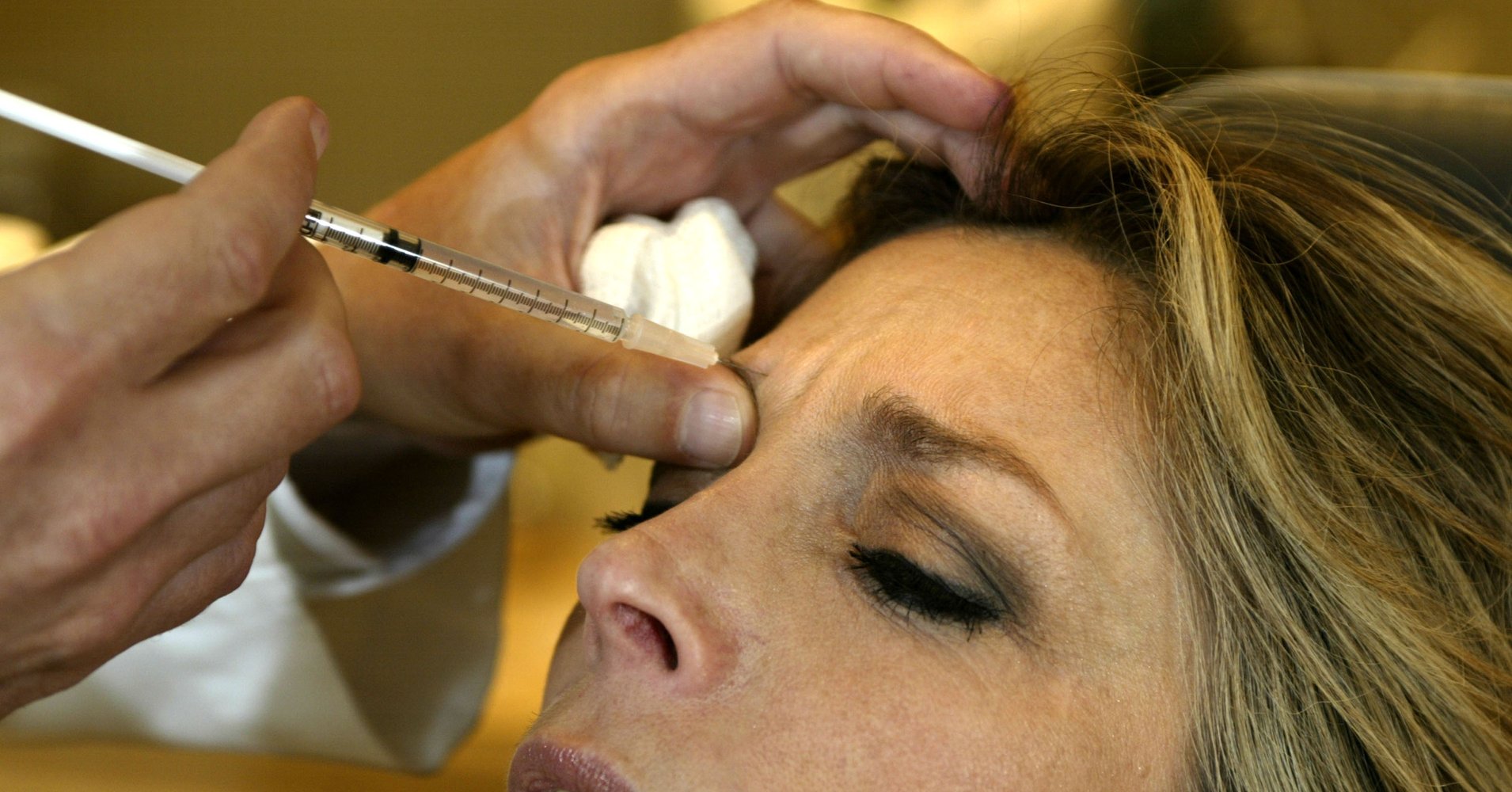 19,20 All three serotype A products have a 150 kDa core botulinum toxin protein and differ in whether they have complexing proteins surrounding the core neurotoxin. OnabotulinumtoxinA and abobotulinumtoxinA have hemagglutinin complexing proteins, whereas incobotulinumtoxinA is free from complexing proteins.19,21 Lack of complexing proteins may reduce antigenicity and hence antibody formation against botulinum toxin, but the clinical significance of complexing proteins has yet to be determined. Botulinum toxin products are not interchangeable because they vary in their formulation, dosing, and clinical response.
19,20 All three serotype A products have a 150 kDa core botulinum toxin protein and differ in whether they have complexing proteins surrounding the core neurotoxin. OnabotulinumtoxinA and abobotulinumtoxinA have hemagglutinin complexing proteins, whereas incobotulinumtoxinA is free from complexing proteins.19,21 Lack of complexing proteins may reduce antigenicity and hence antibody formation against botulinum toxin, but the clinical significance of complexing proteins has yet to be determined. Botulinum toxin products are not interchangeable because they vary in their formulation, dosing, and clinical response.
| Trade name | Company | Toxin component | Other components | Dose for frown line treatment* | Cost |
|---|---|---|---|---|---|
| Botox | Allergan, Inc. | OnabotulinumtoxinA | Human albumin, sodium chloride | 20 to 25 units | $525 for 100-unit vial |
| Dysport | Medicis Pharmaceutical Corporation | AbobotulinumtoxinA | Human albumin, bovine protein,† lactose monohydrate | 50 to 60 units‡ | $475 for 300-unit vial |
| Xeomin | Merz Pharmaceuticals | IncobotulinumtoxinA | Human albumin, sucrose | 20 to 25 units§ | $425 for 100-unit vial |
Aesthetic Consultation
Facial areas of concern are assessed by the physician and patient simultaneously using a handheld mirror during the consultation.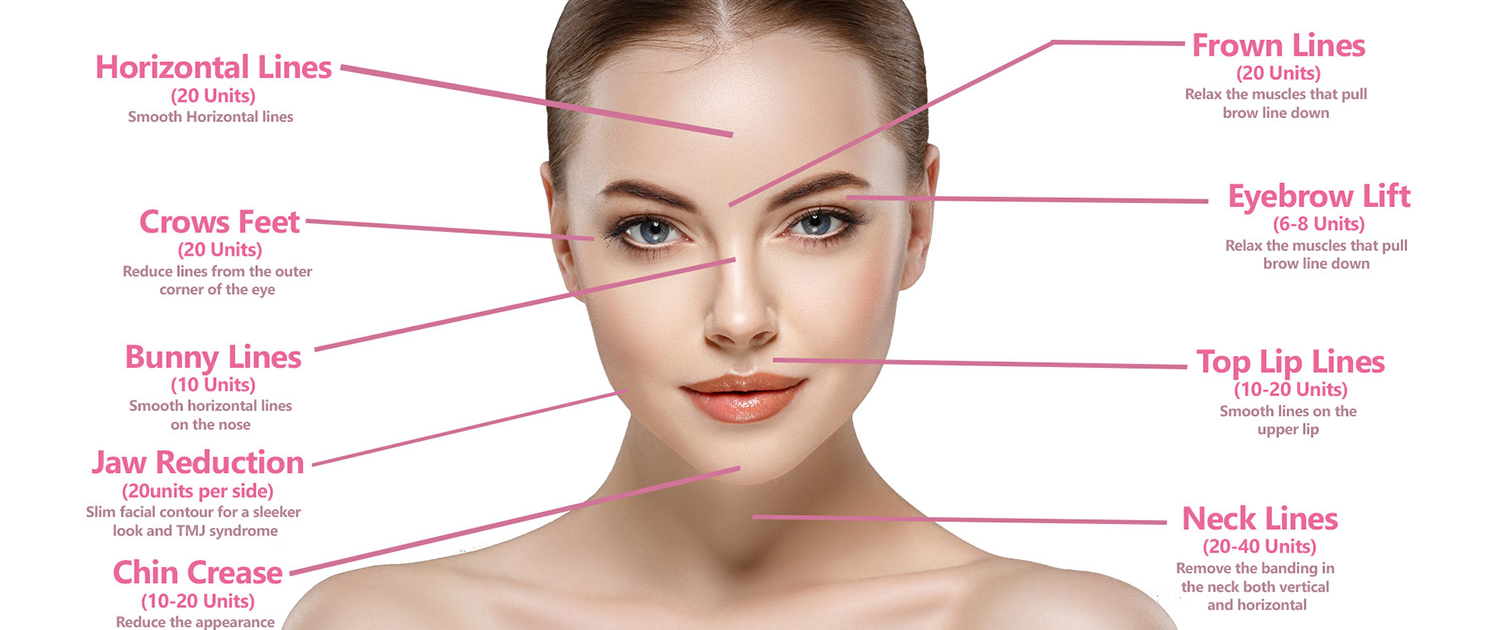 Asymmetries such as uneven eyebrow height and eye aperture are identified. Areas are prioritized and treatment options discussed, including anticipated results and possible complications. Botulinum toxin is the only treatment for dynamic wrinkles currently approved by the FDA. Treatment options for static wrinkles include resurfacing procedures (e.g., chemical peels, microdermabrasion, lasers), topical products (e.g., retinoids), and surgical procedures. Photographic documentation is recommended with any aesthetic procedure. Dynamic and static photographs of treatment areas are typically taken before treatment and two weeks after treatment, once clinical effects are evident.22
Asymmetries such as uneven eyebrow height and eye aperture are identified. Areas are prioritized and treatment options discussed, including anticipated results and possible complications. Botulinum toxin is the only treatment for dynamic wrinkles currently approved by the FDA. Treatment options for static wrinkles include resurfacing procedures (e.g., chemical peels, microdermabrasion, lasers), topical products (e.g., retinoids), and surgical procedures. Photographic documentation is recommended with any aesthetic procedure. Dynamic and static photographs of treatment areas are typically taken before treatment and two weeks after treatment, once clinical effects are evident.22
Procedure Preparation
In preparation for botulinum toxin treatment, or any injectable procedure, bruising can be minimized by advising patients to discontinue aspirin and any medication or dietary supplement that has anticoagulant effects two weeks before treatment.17,23 Anesthesia is not typically necessary for botulinum toxin treatments.
Botulinum Toxin Injection
Botulinum toxin is supplied as a powder and is reconstituted at the time of treatment into a solution using sterile normal saline. Dilution volumes range from 1 to 4 mL per 100-unit vial. The botulinum toxin dose injected into glabellar complex muscles for the treatment of frown lines is based on the specific botulinum toxin product used and mass of the target muscles. Table 2 lists starting doses used for treatment of frown lines with the three FDA-approved botulinum toxin products.19,20
The targeted glabellar complex muscles can be identified by having the patient actively frown, and injections are placed into the contracted muscles (Figure 615). Small volumes of botulinum toxin solution are injected, typically 1 mL or less, using a 30-gauge, 1-inch needle. There are five injection sites, one injection in the procerus muscle and two in each of the corrugator supercilii muscles.15,20,24 Botulinum toxin is commonly used to treat other lines in the upper one-third of the face, such as horizontal forehead lines with injection in the frontalis muscle, and crow’s feet with injection in the lateral orbicularis oculi muscles.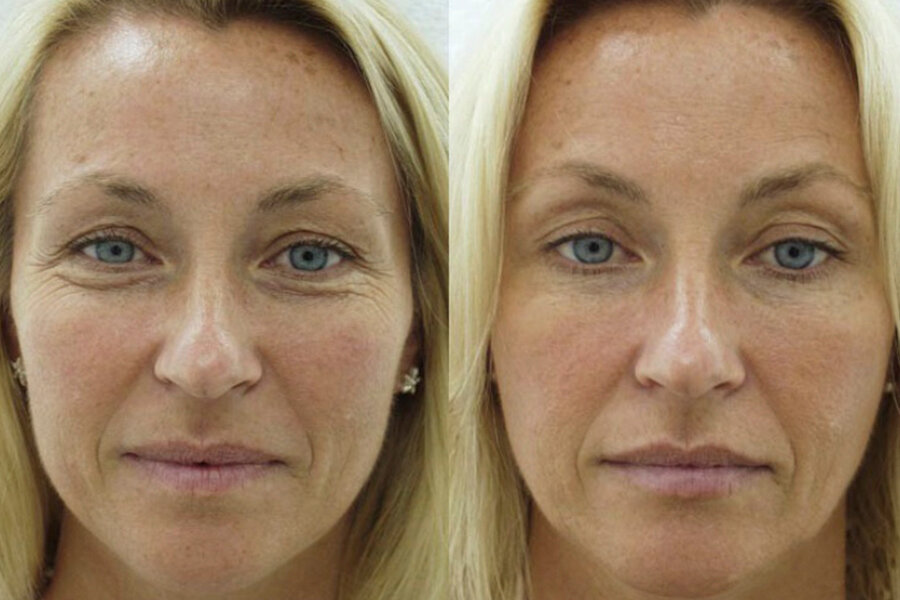 10,11,25 Localized burning or stinging sensation during injection is commonly reported and resolves within a few minutes.15,17
10,11,25 Localized burning or stinging sensation during injection is commonly reported and resolves within a few minutes.15,17
Aftercare
Patients are advised to avoid lying supine following treatment for four hours. They are also advised to avoid massaging or applying heat to the treatment area, and to avoid activities that cause flushing (such as exercising heavily, consuming alcohol, and hot tub use) on the day of treatment.15,26 These aftercare practices are used to reduce potential spread of the toxin, however; they are not supported by randomized controlled trials.
Results and Follow-Up
Partial reduction in function of the targeted glabellar complex muscles is seen by the third day after botulinum toxin injection, with maximal reduction visible two weeks after injection.27Figure 7 shows reduction of dynamic frown lines one month after treatment of the glabellar complex muscles with 20 units of onabotulinumtoxinA.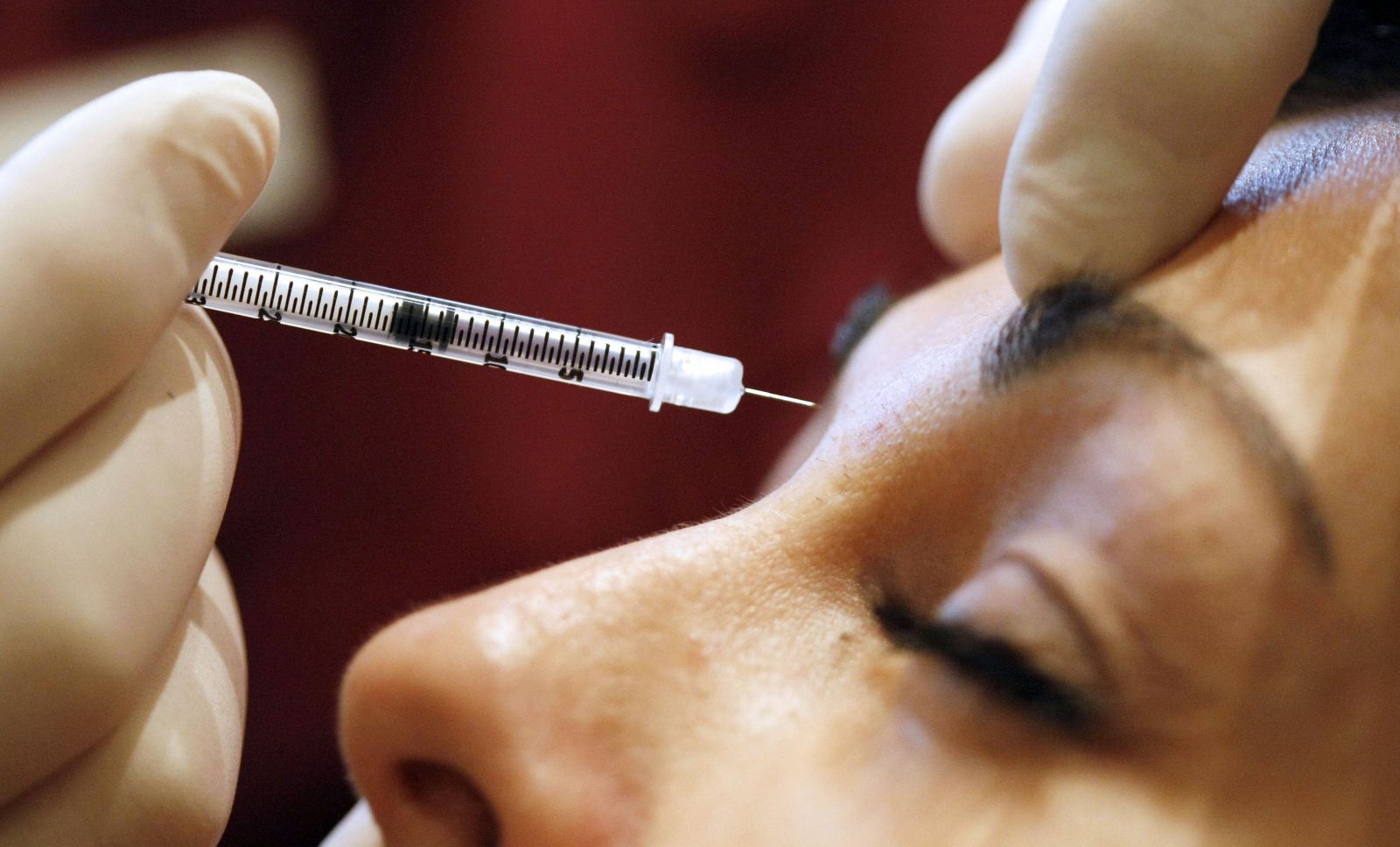 15 Return of muscle function is gradual, typically three to four months after treatment. Subsequent treatment is advised when muscle contraction is visible in the treatment area before facial lines return to their pretreatment appearance.28 After multiple treatments, botulinum toxin effects may be prolonged and, for some patients, treatment intervals can be extended beyond three to four months.29
15 Return of muscle function is gradual, typically three to four months after treatment. Subsequent treatment is advised when muscle contraction is visible in the treatment area before facial lines return to their pretreatment appearance.28 After multiple treatments, botulinum toxin effects may be prolonged and, for some patients, treatment intervals can be extended beyond three to four months.29
Complications
Complications with cosmetic botulinum toxin injections are uncommon and those that occur are usually mild and transient.30 They can be categorized into injection reactions and undesired botulinum toxin effects (Table 3).30–32
| Injection reactions |
| Anxiety or vasovagal episode |
| Ecchymosis |
| Erythema, edema, and tenderness |
| Headache |
| Infection |
| Pain |
| Paresthesia or dysesthesia |
| Undesired botulinum toxin effects |
| Allergic reaction |
| Antibodies against botulinum toxin |
| Blepharoptosis |
| Distant spread from the injection site |
| Eyebrow ptosis |
| Facial asymmetry |
| Medication interactions |
| Undesired eyebrow shape or unsatisfactory result |
INJECTION REACTIONS
Botulinum toxin injections are performed using small-gauge needles to minimize discomfort and bruising. Mild erythema, edema, and tenderness at injection sites are expected and resolve within a day. Bruising is common and ranges from pinpoint needle insertion marks to quarter-sized ecchymoses that can take up to two weeks to resolve. Application of ice and pressure to a bruise can minimize enlargement.15 Headaches can occur with facial injections; most are mild and spontaneously resolve a few days after treatment.33 There are reports of idiosyncratic severe headaches lasting two to four weeks.34 Nonsteroidal anti-inflammatory drugs or opioids may be used to manage headaches based on severity. Infection is rare, but can occur with any procedure that breaches the skin barrier. Paresthesia or dysesthesia in the treatment area is rare, and may be caused by nerve trauma. Anxiety with injection procedures is common. Vasovagal episodes associated with severe anxiety can occur and it is advisable to have appropriate emergency protocols and medications available in the office when performing injection procedures.
Mild erythema, edema, and tenderness at injection sites are expected and resolve within a day. Bruising is common and ranges from pinpoint needle insertion marks to quarter-sized ecchymoses that can take up to two weeks to resolve. Application of ice and pressure to a bruise can minimize enlargement.15 Headaches can occur with facial injections; most are mild and spontaneously resolve a few days after treatment.33 There are reports of idiosyncratic severe headaches lasting two to four weeks.34 Nonsteroidal anti-inflammatory drugs or opioids may be used to manage headaches based on severity. Infection is rare, but can occur with any procedure that breaches the skin barrier. Paresthesia or dysesthesia in the treatment area is rare, and may be caused by nerve trauma. Anxiety with injection procedures is common. Vasovagal episodes associated with severe anxiety can occur and it is advisable to have appropriate emergency protocols and medications available in the office when performing injection procedures.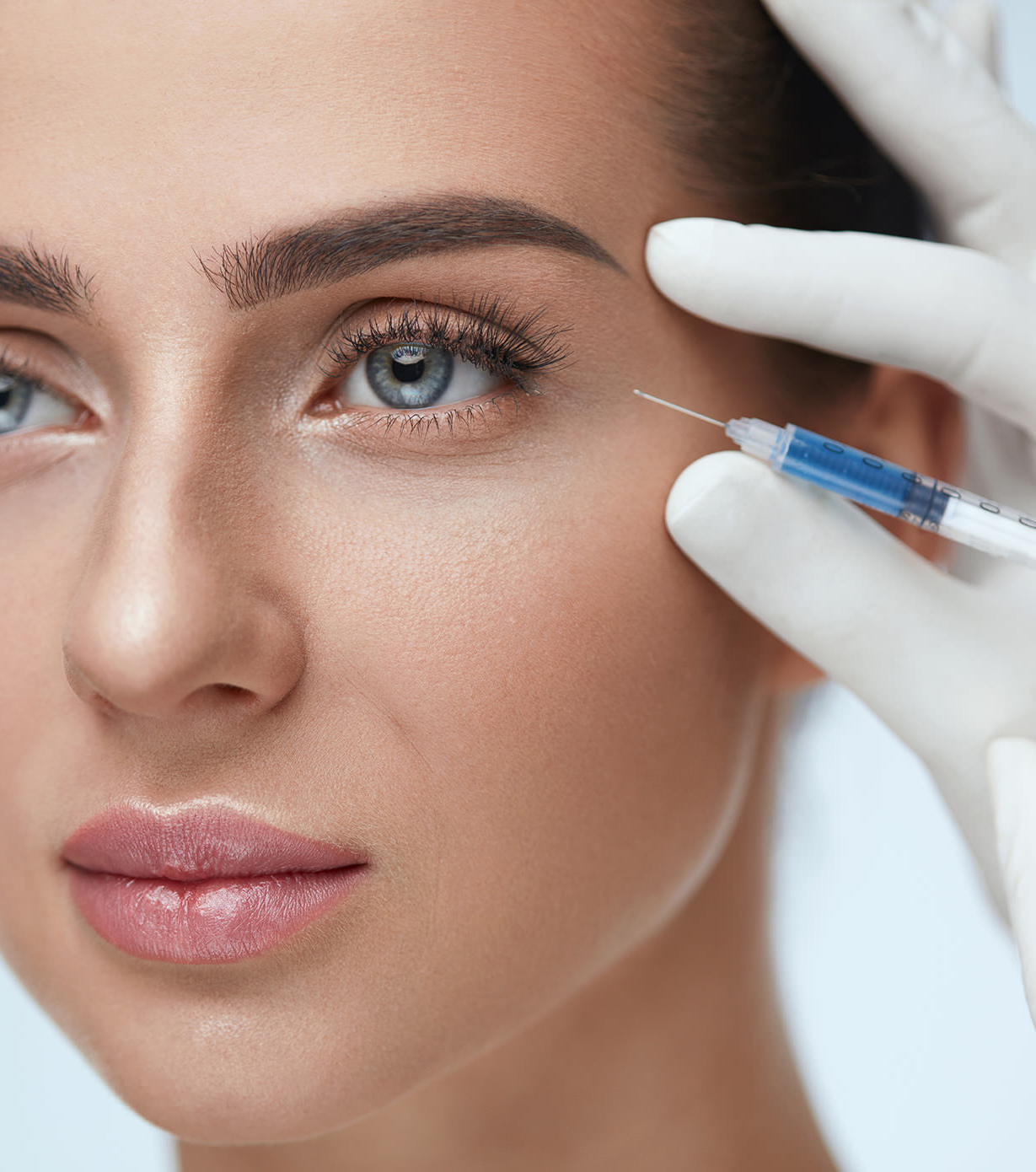 35
35
UNDESIRED EFFECTS
Complications related to botulinum toxin effects occur less frequently than injection reactions, and are primarily caused by temporary denervation of adjacent muscles outside of the intended treatment area. These complications are technique-dependent; incidence declines as injector skill improves.30,31 Temporary blepharoptosis (upper eyelid droop) is uncommon (1% to 5%) but is distressing for patients.9 It is almost always unilateral, seen as a 2- to 3-mm lowering of the affected eyelid that is most marked at the end of the day with muscle fatigue (Figure 815). Blepharoptosis is caused by deep migration of botulinum toxin through the orbital septum fascia to the levator palpebrae superioris, an upper eyelid levator muscle. Incidence of blepharoptosis is reduced by placing botulinum toxin injections at least 1 cm above the supraorbital ridge at the midpupillary line when treating the corrugator muscles. 14,17 Blepharoptosis may be treated using ophthalmic solutions that have alpha-adrenergic effects, such as over-the-counter naphazoline 0.025%/pheniramine 0.3% or prescription apraclonidine 0.5% (Iopidine). Both medications cause contraction of Müller muscle, an adrenergic levator muscle of the upper eyelid, resulting in elevation of the upper eyelid. Apraclonidine is reserved for refractory cases and should be used with caution because it can exacerbate or unmask underlying glaucoma.32 Eyebrow ptosis and undesired eyebrow shape are usually related to unintended botulinum toxin effects in the frontalis muscle. Some of these complications can be corrected with botulinum toxin injection in muscles that antagonize the affected muscles; however, complications caused by involvement of adjacent muscles are temporary and will spontaneously resolve as botulinum toxin effects diminish. Facial asymmetry can result from uneven dosing of botulinum toxin. Consistent technique and careful attention to injection volumes at the time of treatment can reduce the incidence of asymmetries.
14,17 Blepharoptosis may be treated using ophthalmic solutions that have alpha-adrenergic effects, such as over-the-counter naphazoline 0.025%/pheniramine 0.3% or prescription apraclonidine 0.5% (Iopidine). Both medications cause contraction of Müller muscle, an adrenergic levator muscle of the upper eyelid, resulting in elevation of the upper eyelid. Apraclonidine is reserved for refractory cases and should be used with caution because it can exacerbate or unmask underlying glaucoma.32 Eyebrow ptosis and undesired eyebrow shape are usually related to unintended botulinum toxin effects in the frontalis muscle. Some of these complications can be corrected with botulinum toxin injection in muscles that antagonize the affected muscles; however, complications caused by involvement of adjacent muscles are temporary and will spontaneously resolve as botulinum toxin effects diminish. Facial asymmetry can result from uneven dosing of botulinum toxin. Consistent technique and careful attention to injection volumes at the time of treatment can reduce the incidence of asymmetries.
Other rare complications associated with botulinum toxin injections include formation of antibodies (less than 1%), which can render treatments ineffective.36 Medications that inhibit neuromuscular signaling such as aminoglycosides, quinidine, anticholinergics, and muscle relaxants, may potentiate botulinum toxin effects.37 AbobotulinumtoxinA is contraindicated in patients with cow’s milk protein allergy because bovine protein is a constituent.38,39 Although extremely rare, immediate hypersensitivity and allergic reactions may occur, with signs of urticaria, edema, and possibly anaphylaxis. Using standard emergency protocols and medications such as epinephrine and methylprednisolone (Solu-Medrol) is advised when indicated, rather than diphenhydramine (Benadryl) because of its anticholinergic effects.40 Case reports of adverse effects due to distant spread from the injection site have been reported with large doses of botulinum toxin (e.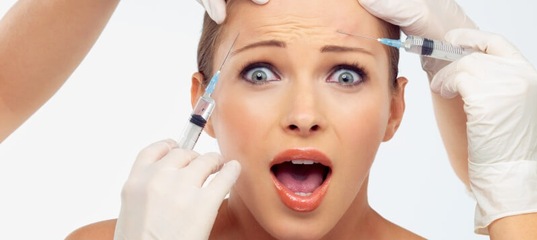 g., 300 units in the calves), which include generalized muscle weakness, ptosis, dysphagia, dysarthria, urinary incontinence, respiratory difficulties, and death from respiratory compromise.41 Distant spread has not been reported with cosmetic use of botulinum toxin for frown lines or other facial indications. There are case reports of botulism with injected botulinum toxin; however, these instances involved research-grade botulinum toxin that was not approved or intended for human use.42,43
g., 300 units in the calves), which include generalized muscle weakness, ptosis, dysphagia, dysarthria, urinary incontinence, respiratory difficulties, and death from respiratory compromise.41 Distant spread has not been reported with cosmetic use of botulinum toxin for frown lines or other facial indications. There are case reports of botulism with injected botulinum toxin; however, these instances involved research-grade botulinum toxin that was not approved or intended for human use.42,43
Financial Considerations and Coding
The current procedural terminology (CPT) designation for botulinum toxin injection of the face is chemodenervation of muscles innervated by the facial nerve (CPT code: 64612). Cosmetic botulinum toxin treatments are not covered by insurance. Fees for injections range from $250 to $550 per treatment area and are based on the number of botulinum toxin units used or on the area treated (i.e., frown lines, crow’s feet, or horizontal forehead lines).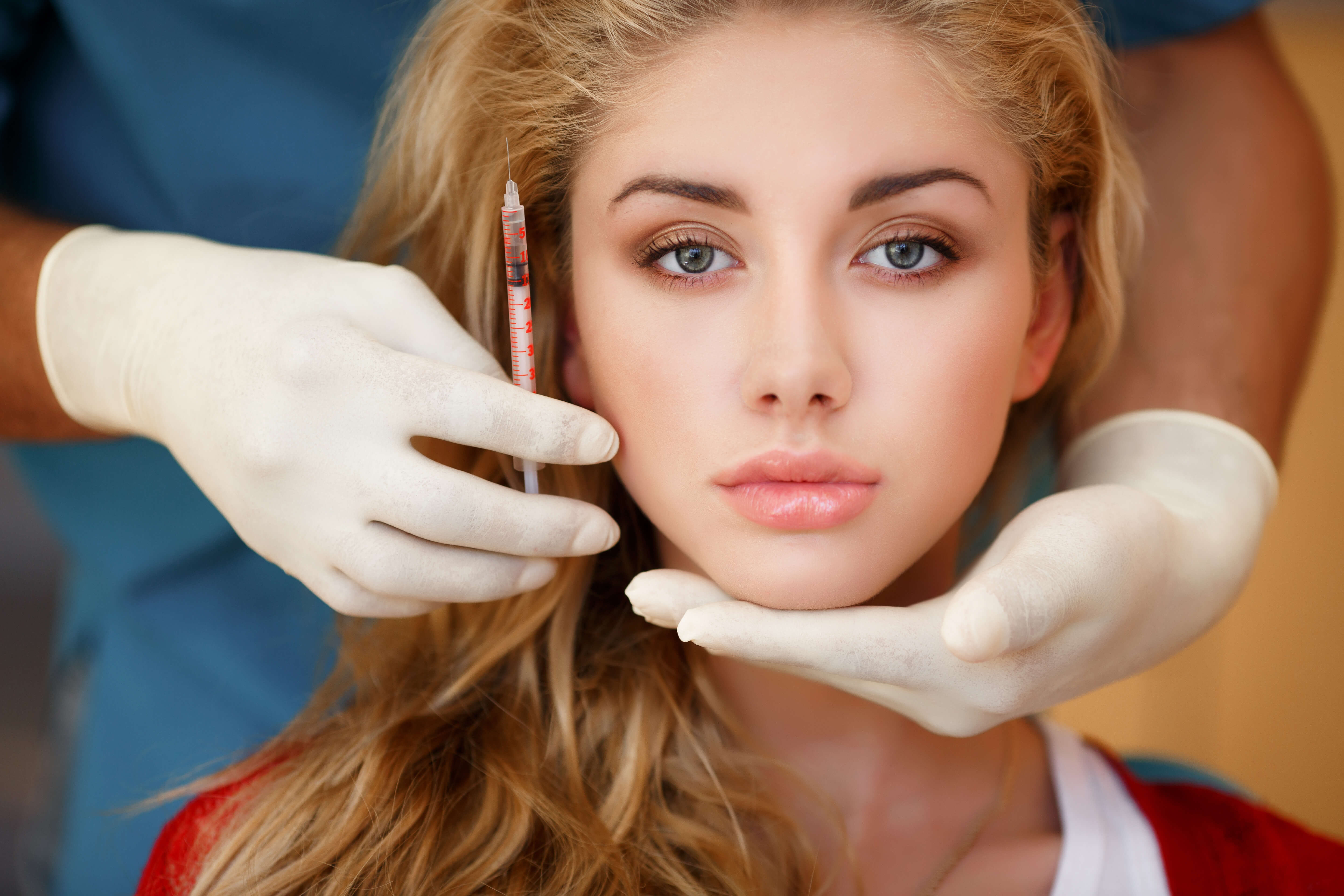
Data Sources: A PubMed, Cochrane database, POEMs, and Essential Evidence search was completed in Clinical Queries using the key terms botulinum toxin, safety, efficacy, cosmetic, and frown lines. The search included meta-analyses, randomized controlled trials, clinical trials, and reviews. Also searched were the FDA website, aesthetic procedure textbooks, and UpToDate. Search dates: February 2, 2013, and April 24, 2014.
Botox, Dysport injections – correction of mimic wrinkles in Moscow
#clinic_kosmetomed
Botox is a generic term that is commonly used to refer to injections of drugs based on botulinum toxin type A.
Currently, there are three types of drugs based on botulinum toxin A on the world market of the beauty industry:
- Botox – manufactured in the USA by Allergan
- Dysport – made in France “Ipsen”
- Xeomin – Made in Germany by Merz Aesthetics
They are identical in their pharmacological properties and have the same effect. All these preparations are actively used by specialists of our clinic for the correction of mimic wrinkles and in the treatment of excessive sweating.
All these preparations are actively used by specialists of our clinic for the correction of mimic wrinkles and in the treatment of excessive sweating.
Not so long ago, the Russian analogue of Botox, Relatox, appeared on the domestic market. The drug is produced in Ufa at the Immunopreparat enterprise, which is part of JSC NPO Microgen. Relatox is actively used in neurology for the treatment of blepharospasm, spasticity of the muscles of the upper limb after an ischemic stroke in adults and spasticity of the upper and lower limbs in children with cerebral palsy, as well as in cosmetology. The doctors of our clinic, when correcting aesthetic problems, prefer to use imported botulinum toxin preparations due to little experience in using Relatox.
For the first time, Botox as a drug was first discussed in 1989. Then he got good results in the treatment of strabismus and hemifacial spasm.
Just 2 years later, in 1991, as a result of painstaking research by Allergan scientists, the first injectable preparation for aesthetic medicine was released under the trade name Botox (Botox). In Russia, it has been used since 1994. In 2002, the international organization FDI (Food and Drug Administration) and the Russian Ministry of Health officially approved the use of Botox as a drug for aesthetic procedures in the correction of wrinkles in the forehead and between the eyebrows.
In Russia, it has been used since 1994. In 2002, the international organization FDI (Food and Drug Administration) and the Russian Ministry of Health officially approved the use of Botox as a drug for aesthetic procedures in the correction of wrinkles in the forehead and between the eyebrows.
About the Botox injection procedure – what is botulinum therapy?
Botox injections are injections of drugs based on the neurotoxin botulinum type A under the skin. It is produced by the bacteria Clostridium Botulinum and has a neuroparalyzing effect. In cosmetology practice, a highly purified toxin is used in extremely minimal dosages, in which it is absolutely harmless to the human body.
Botulinum toxin is a protein that blocks the transmission of nerve impulses to the muscles. In other words, the command comes from the nerve fiber, but the muscle cannot respond to them, so its blockage occurs. If this toxin is injected into the muscles of the face, during the contraction of which wrinkles appear – mimic wrinkles, this will allow for a while to immobilize this area during mimicry and smooth out mimic wrinkles.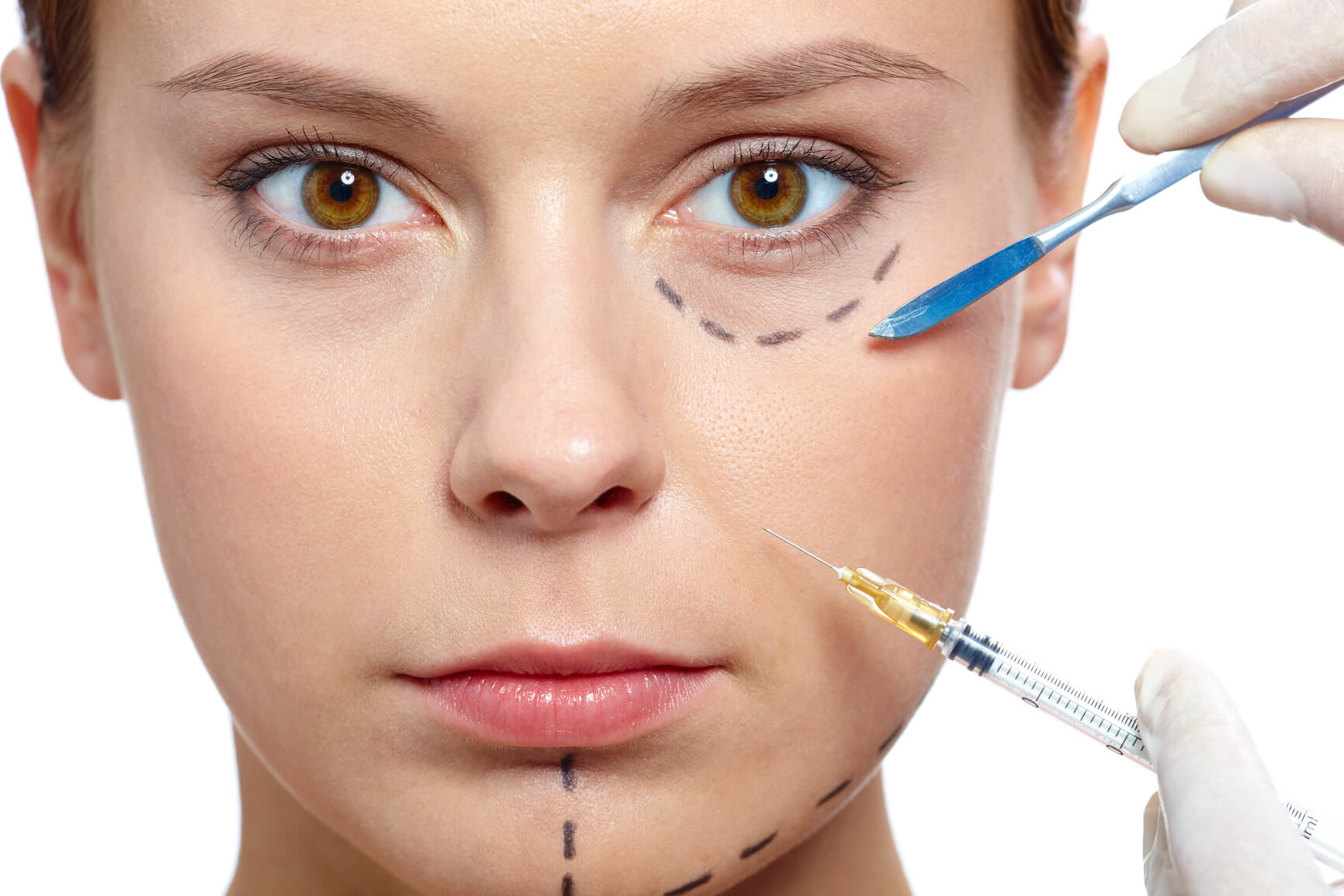
The effect will last for about 6 months, after which the injected botulinum toxin is completely inactivated, and the innervation will resume, and, accordingly, the mimic activity of the muscles will resume. Therefore, further injections are necessary. If you repeat the procedure 3-5 times, then the habit of grimacing while expressing emotions will be lost, which will prevent the formation of deep wrinkles and folds in place of facial wrinkles.
In cases of pronounced deep mimic wrinkles, the effect of the drug may be limited to 2-3 months. In this case, the specialists of our clinic recommend combining the introduction of Botox with contouring procedures, laser resurfacing, etc.
How is the procedure for the introduction of Botox, Dysport, Xeomin
At the first stage, a consultation with a cosmetologist is carried out, during which the indications and contraindications for the procedure are evaluated. In addition, the area for wrinkle correction is determined. To this end, the client is asked to perform the usual facial movements, such as frown, smile, squint, etc. Based on the results of the examination, markings are applied to the skin, according to which injections will be carried out.
To this end, the client is asked to perform the usual facial movements, such as frown, smile, squint, etc. Based on the results of the examination, markings are applied to the skin, according to which injections will be carried out.
Next, the skin is disinfected and the drug is injected using a microneedle according to a previously developed plan. For another 10-30 minutes, the client remains in the clinic under the supervision of the medical staff. In order for the drug to have the claimed effect, it is necessary to periodically perform intense mimic movements during the day – 3-5 minutes every 2-3 hours.
The effect of the introduction of botulinum toxin becomes noticeable not immediately, but after a week, when the muscles relax slightly. The final effect of smoothing mimic wrinkles on average occurs after 14-16 days and lasts 3-6 months. Then you can repeat the procedure.
IMPORTANT NOTE: “According to Oregon Health & Science University study, patients can reduce the frequency of Botox injections after approximately 2 years of consistent use.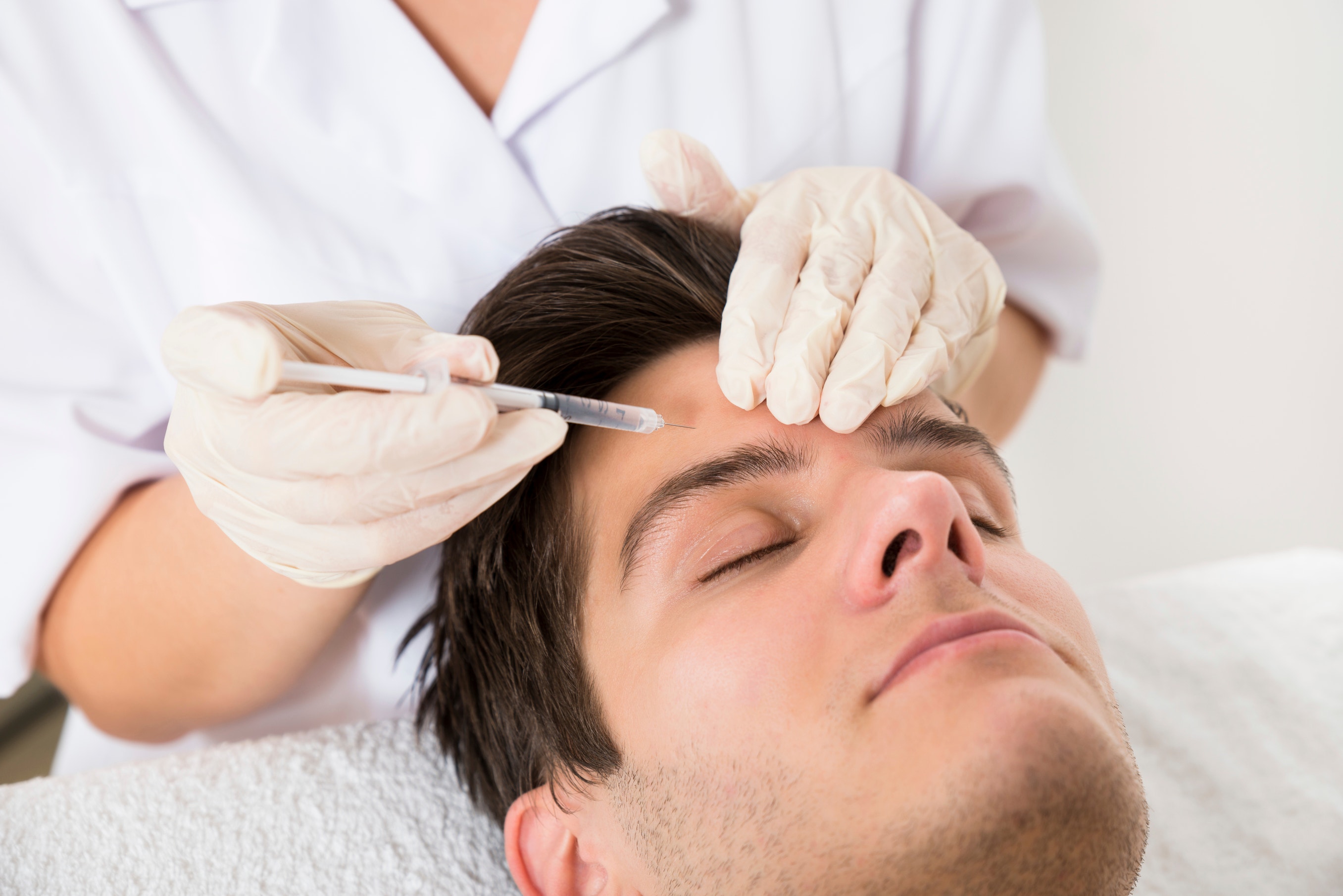 The effectiveness of the drug for smoothing wrinkles is not reduced.”
The effectiveness of the drug for smoothing wrinkles is not reduced.”
Mesobotox Treatment
Botox can be administered using the mesobotox technique, an injection procedure with highly diluted botulinum toxin. By analogy with mesotherapy, the drug is injected subcutaneously and affects individual muscle fibers adjacent to the skin. As a result, partial muscle work is preserved – active facial expressions remain, but without pronounced wrinkles.
Indications for botulinum therapy
The main indications for Botox injections are:
elimination of mimic wrinkles that appear during active muscle work:
- Eyebrow wrinkles;
- Horizontal forehead wrinkles;
- Crow’s feet – wrinkles at the corners of the eyes;
- Wrinkles at the corners of the lips;
- Wrinkles on the bridge of the nose.
- In addition, with the help of Botox injections, you can lift the tip of the nose, smooth out the hump, and correct the shape of the nostrils.

- Botulinum toxin can block not only the muscles, but also the nerve endings of the sweat glands. Therefore, it is also used to treat hyperhidrosis – increased sweating in the palms, feet, armpits. The effect of such treatment can last 8-12 months.
After the procedure
To avoid unwanted consequences and achieve the expected effect, it is recommended to follow a few rules:
- During the first 4 hours after the administration of botulinum toxin preparations, it is not recommended to touch the treated skin surface with your hands, do not take a horizontal position, and reduce physical activity on the first day.
- During the first two days, it is not recommended to do sports and household chores with your head down: vacuuming, mopping, ironing. This can lead to increased blood circulation, and improper distribution of the drug.
- During the week, it is desirable to avoid exposure to high and very low temperatures and direct insolation, it is not recommended to visit baths and saunas so that the injected drug is not inactivated.

- It is not recommended to do hardware cosmetic procedures in the injection zone for 2 weeks, as well as massage, as this will speed up the process of restoring muscle innervation.
Contraindications for the administration of Botox preparations
- Pregnancy and lactation.
- Myasthenia gravis and myasthenic symptoms.
- Bleeding tendency and need for regular intake of anticoagulants and antiplatelet agents.
- History of neurological disease.
- The presence in the area of the proposed injection of manifestations of skin diseases and inflammatory elements.
- Individual intolerance to the components of the drug.
In addition, Botox injections are not recommended for patients over 60 years of age due to the high risk of asymmetry and other aesthetic complications.
4 reasons to choose our clinic for botulinum therapy procedures
- experienced medical specialists who have undergone special training and have a personal certificate (with a unique number) from the manufacturer confirming the right to work with drugs based on botulinum toxin;
- only certified drugs from an authorized dealer;
- low price compared to commercial clinics;
- strict observance of all rules of asepsis and antisepsis
Before the botulinum therapy procedure, you will definitely consult a doctor in order to discuss your wishes, the possibilities of achieving them and the predicted results, as well as indications and contraindications for the introduction of botulinum toxin.
Your safety, health and beauty have been our priority for many years.
Botox (face, neck, décolleté) 1 unit
345
rub“Dysport” (face, neck, decollete) 1 ED
145
rub“Xeomin” (face, neck, decollete) 1 ED
345
rub“Relatox” (face, neck, decollete) 1 ED
340
rub
Botox injections in the forehead / between the eyebrows
Preparations based on botulinum toxin (“Botox”) are used by cosmetologists as mimic wrinkles . The drug is injected with a thin needle, acting on the muscles of the face, relaxing them. As a result, mimic wrinkles are visually smoothed , and new ones are not formed during the action of the drug.
The drug is injected with a thin needle, acting on the muscles of the face, relaxing them. As a result, mimic wrinkles are visually smoothed , and new ones are not formed during the action of the drug.
The history of Botox
Botulinum toxin is the substance that forms the basis of Botox procedures. It is produced by the bacteria Clostridium botulinum. Initially, the substance was used to solve other problems. This is how people with neurosis of the facial nerves were treated. Muscle clamps are formed on the face due to nervous strain, psychological problems. A person does not fully control the muscles, and they are constantly in good shape due to psychological clamps. Botulinum toxin was used to relax them.
Doctors noticed that after the introduction of the drug, the network of wrinkles on the face completely disappears. And deep wrinkles become barely noticeable. This is how Botox procedures were discovered, both as a cosmetic preparation and as a cosmetic method.
Indications and contraindications for the procedure
Botox injections are given to patients with hypertonicity of the facial muscles. The main indication for the procedure today is the appearance of wrinkles . How many units of Botox are needed – the beautician will tell you. Botox injections for the forehead and between the eyebrows are applied according to individual indicators: the procedure may be required both at the age of 20 and at 40.
Contraindications
- Inflammation of the skin of the face.
- Infectious diseases.
- Pregnancy and lactation.
- Chronic diseases in the acute stage.
- Allergic reaction to the drug.
- Children under 18 years of age.
Before the introduction of the drug, the doctor of the Aesthetic Club will definitely conduct a survey, collect an anamnesis, and make sure that there are no contraindications.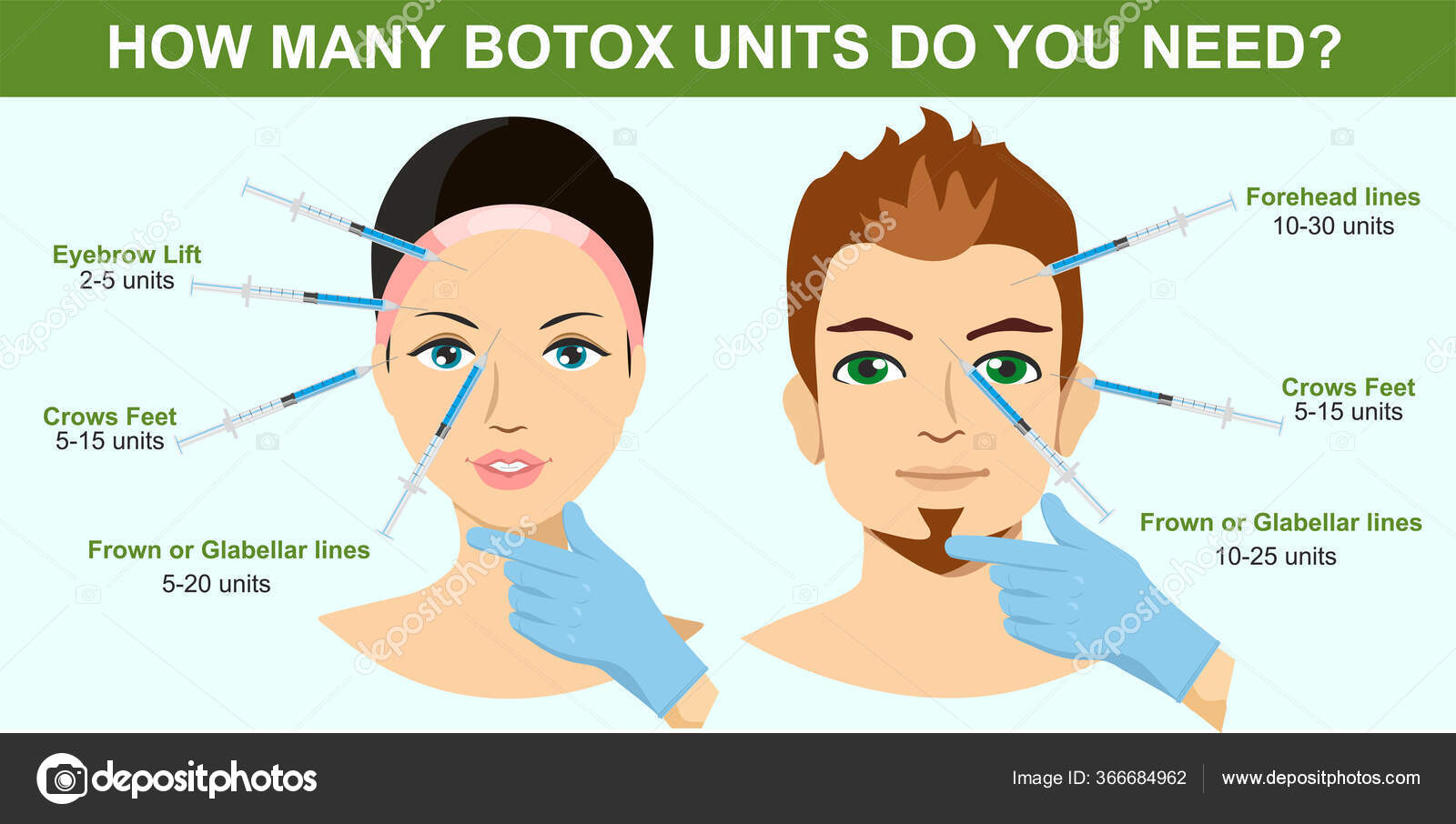
Procedure description
Women call the procedure “lunchtime”. Regular patients of cosmetology clinics run in for injections at lunchtime. The doctor examines the skin, interviews the patient, performs the procedure. Everything takes 15-30 minutes.
Botulinum therapy is considered a painless procedure. . The needles for the introduction of the substance are so thin that they do not cause pain.
The patient is in a chair, in a reclining position. The doctor asks to smile, make several different grimaces in order to understand the location of the facial muscles and the level of their tension. After that, the introduction of the substance begins. The procedure is completely safe, injections are carried out with sterile disposable instruments.
The number of units for correction between the eyebrows in women varies on average in the range from 15 to 100 units, for the forehead – from 4 to 80 units. And for each patient, the indicators will be individual: it depends on the physical characteristics of the person and the selected drug.
And for each patient, the indicators will be individual: it depends on the physical characteristics of the person and the selected drug.
In rare cases, a second procedure after 14 days is required. This is necessary when the muscles of the face work asymmetrically, or one of the sides of the face is less sensitive to the drug.
At the end of the procedure, barely noticeable traces of the introduction of the substance will remain on the face. They disappear, as a rule, in half an hour and do not cause any concern. In order not to bring the infection, it is better not to touch the face after the procedure.
Post-procedure advice and rehabilitation
The procedure is considered easy and does not require much effort on the part of the patient. However, there are still rules.
Period after the procedure
- It is forbidden to take alcohol on the day of the procedure and limit its consumption for the next 2 weeks.

- It is not recommended to take antibiotics during the same period.
- Avoid taking B vitamins (within 2 weeks).
- Immediately after the procedure, you can not lower your head, lie down. The rule is valid for 4 hours.
- There will be no traces of the injection, so you can do almost any type of activity, except for those that will make you overstrain, sweat. On the day of the procedure, exclude sports.
- It is not recommended to visit the sauna, bath for two weeks.
- Facial massage not recommended.
After the procedure, doctors advise you to frown, smile, and exercise facial expressions as often as possible. So “Botox” is evenly distributed over the tissues. The effect does not come immediately: every day, patients notice more and more straightening of the skin.
Wrinkles disappear before the eyes . The effect of one procedure lasts an average of 2 to 6 months.

 gov: Botulinum Toxins
gov: Botulinum Toxins ..
..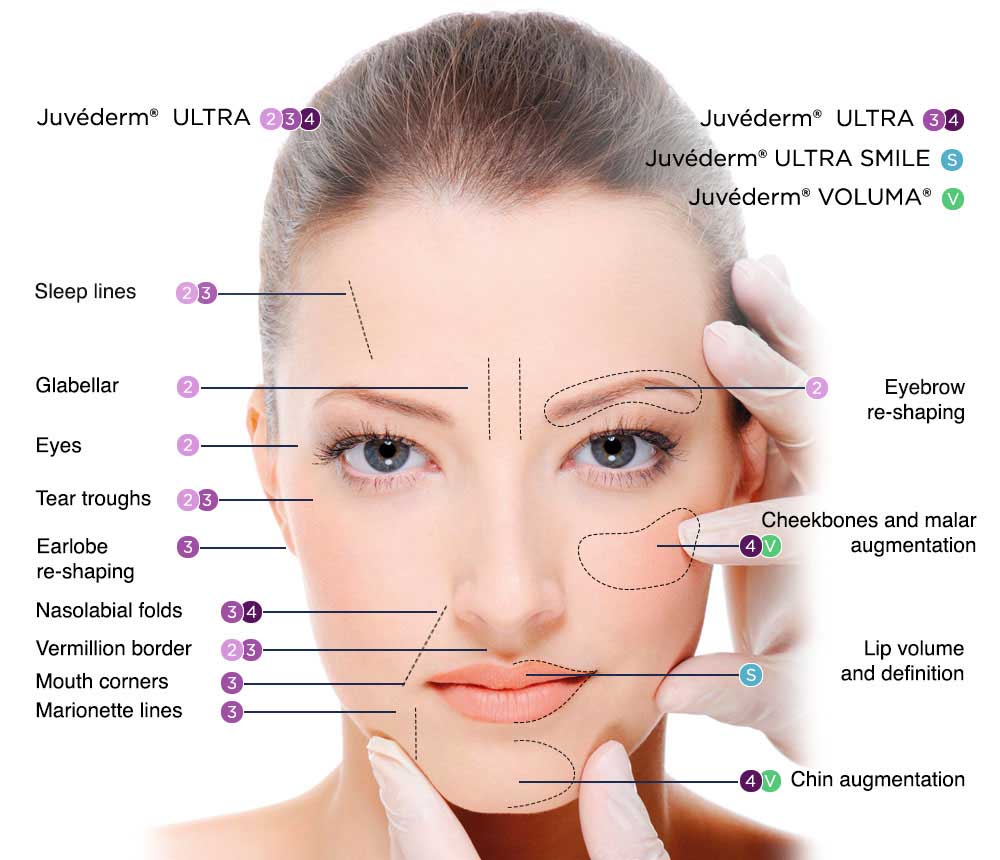 ..
..